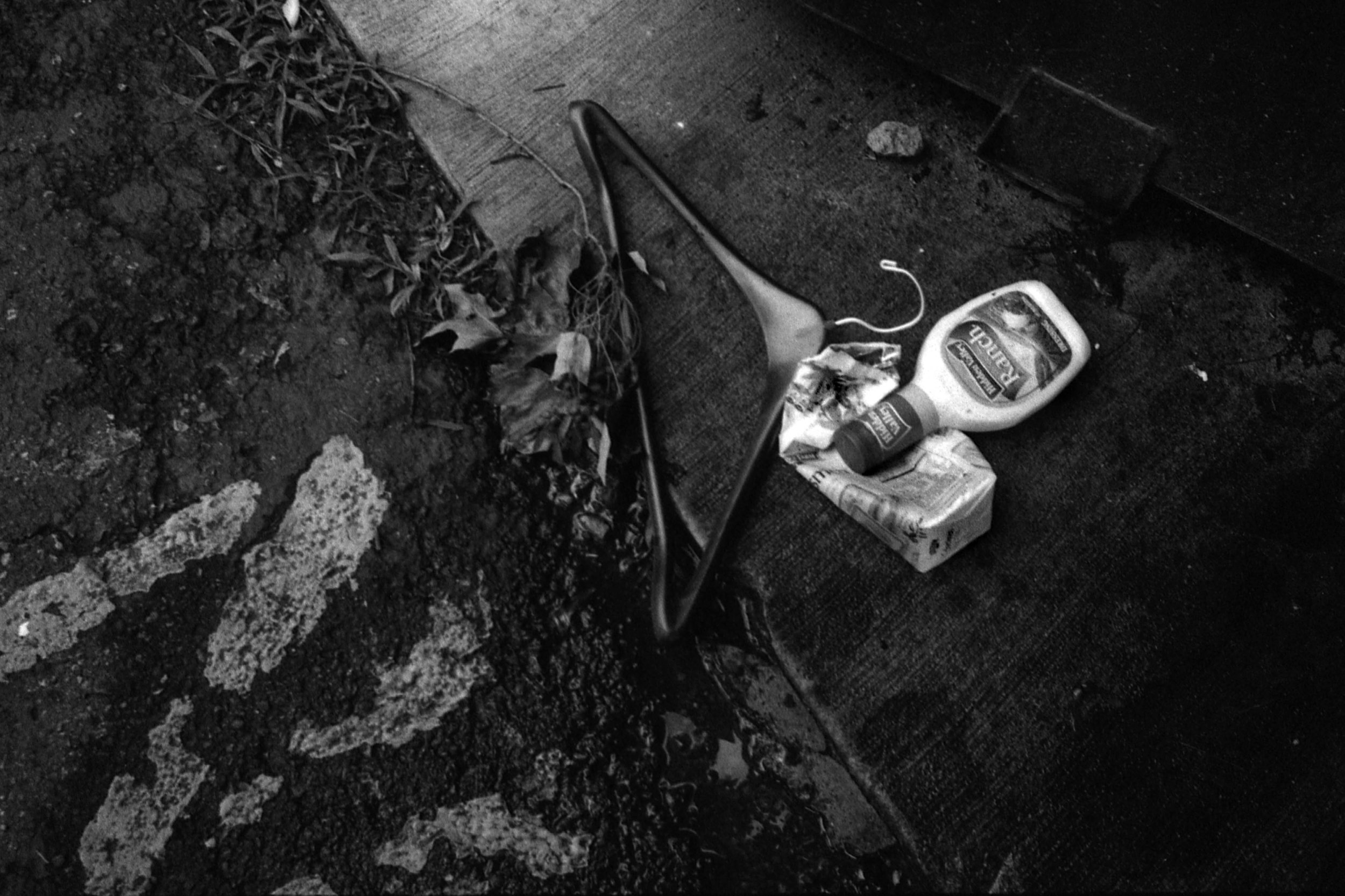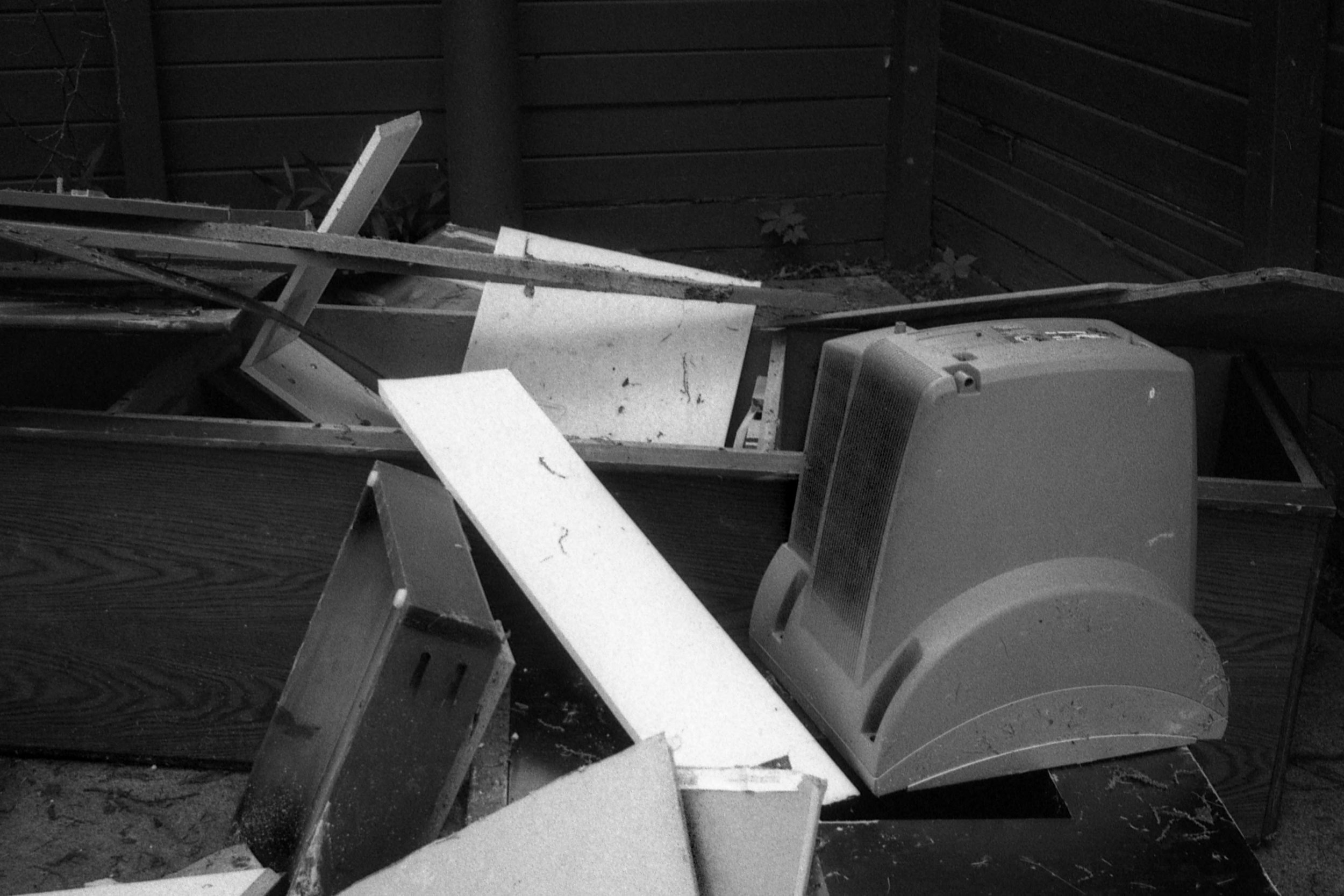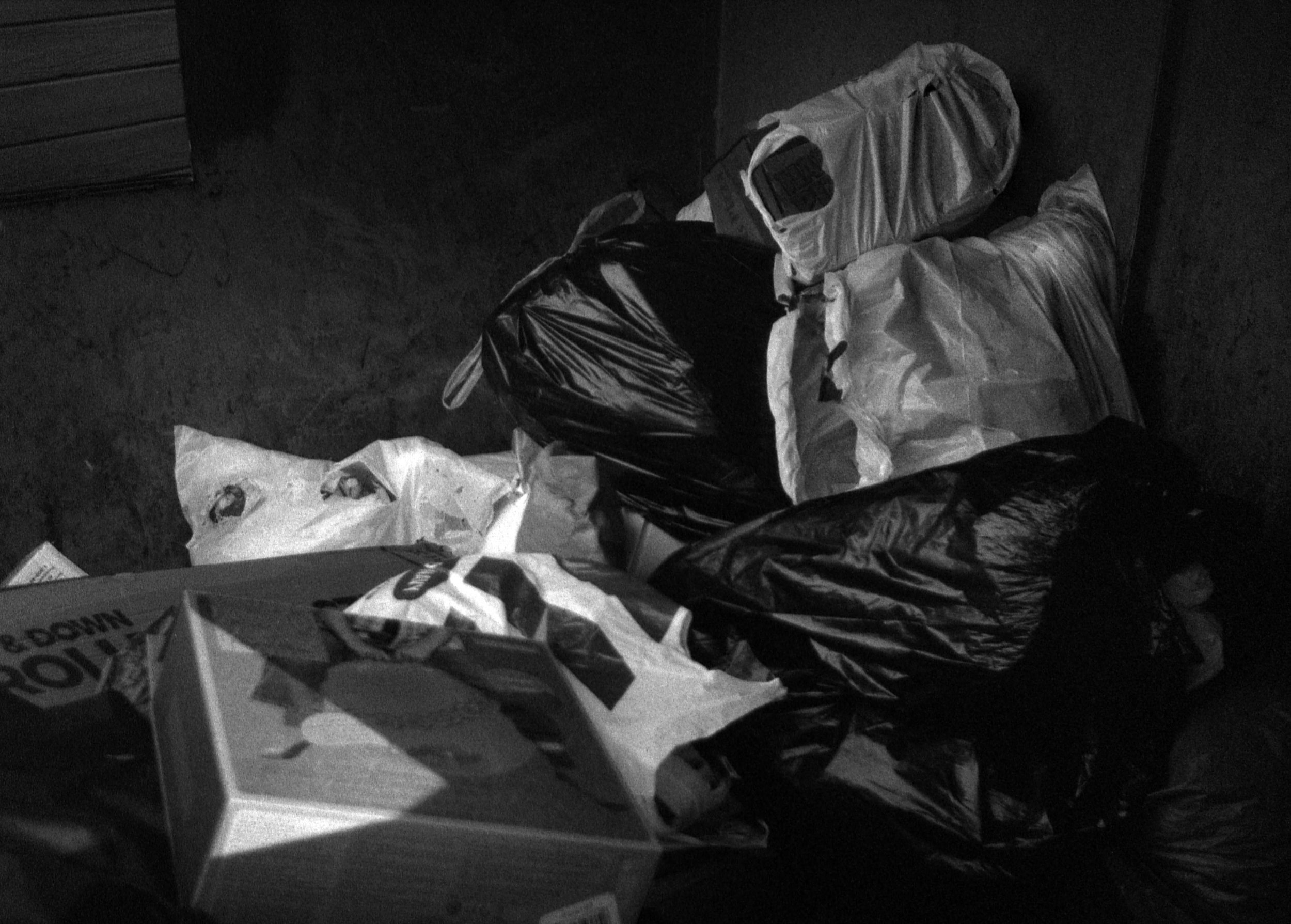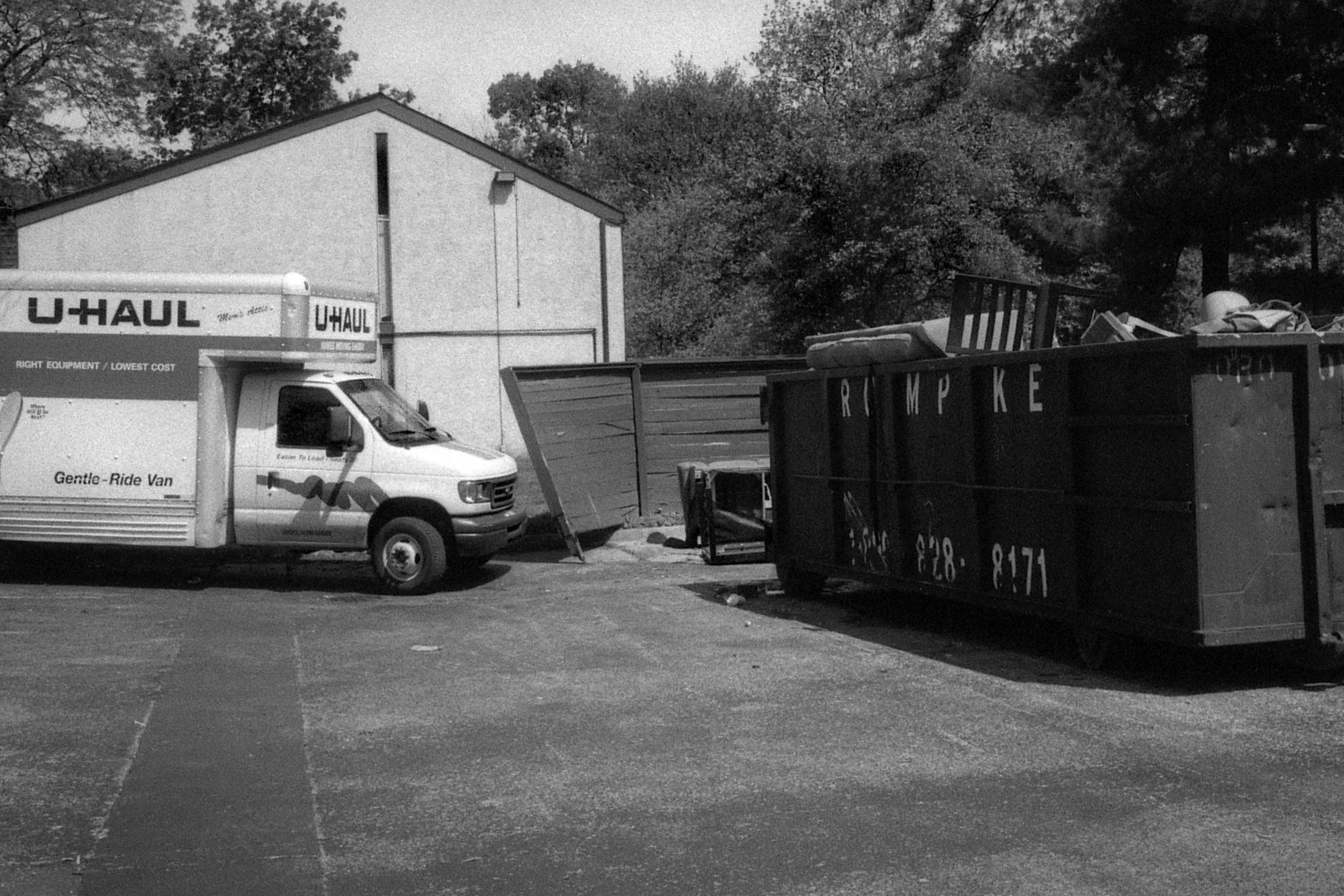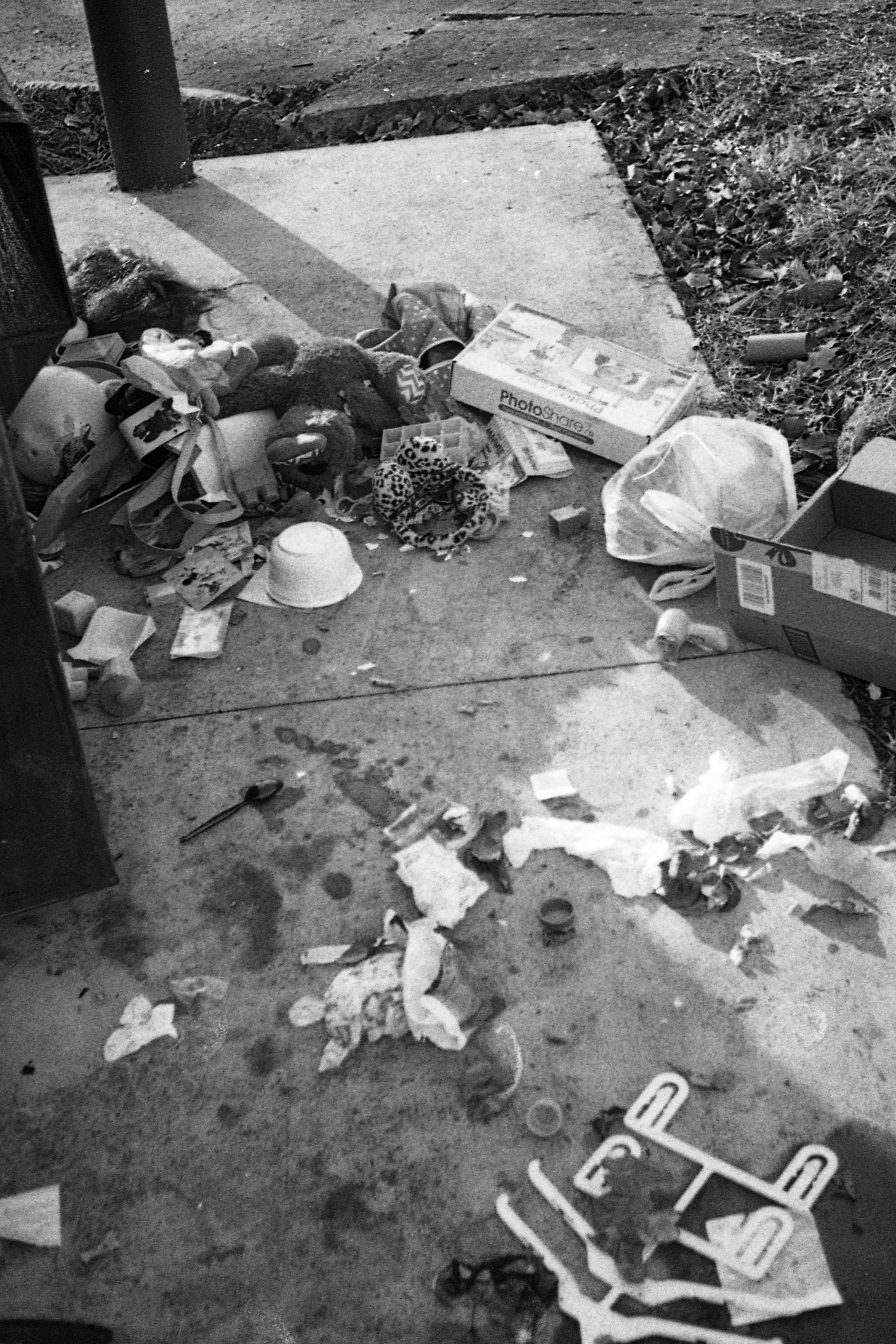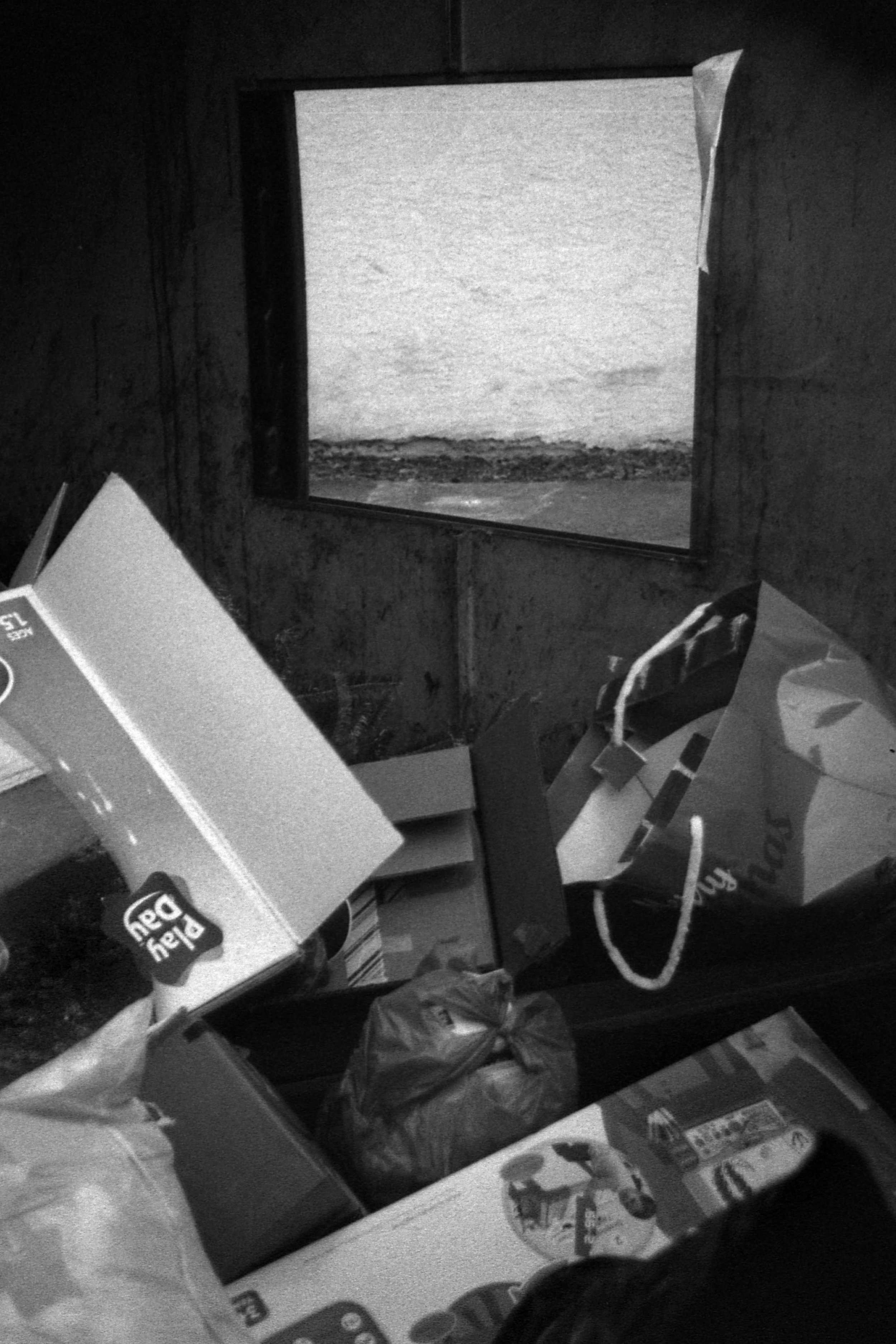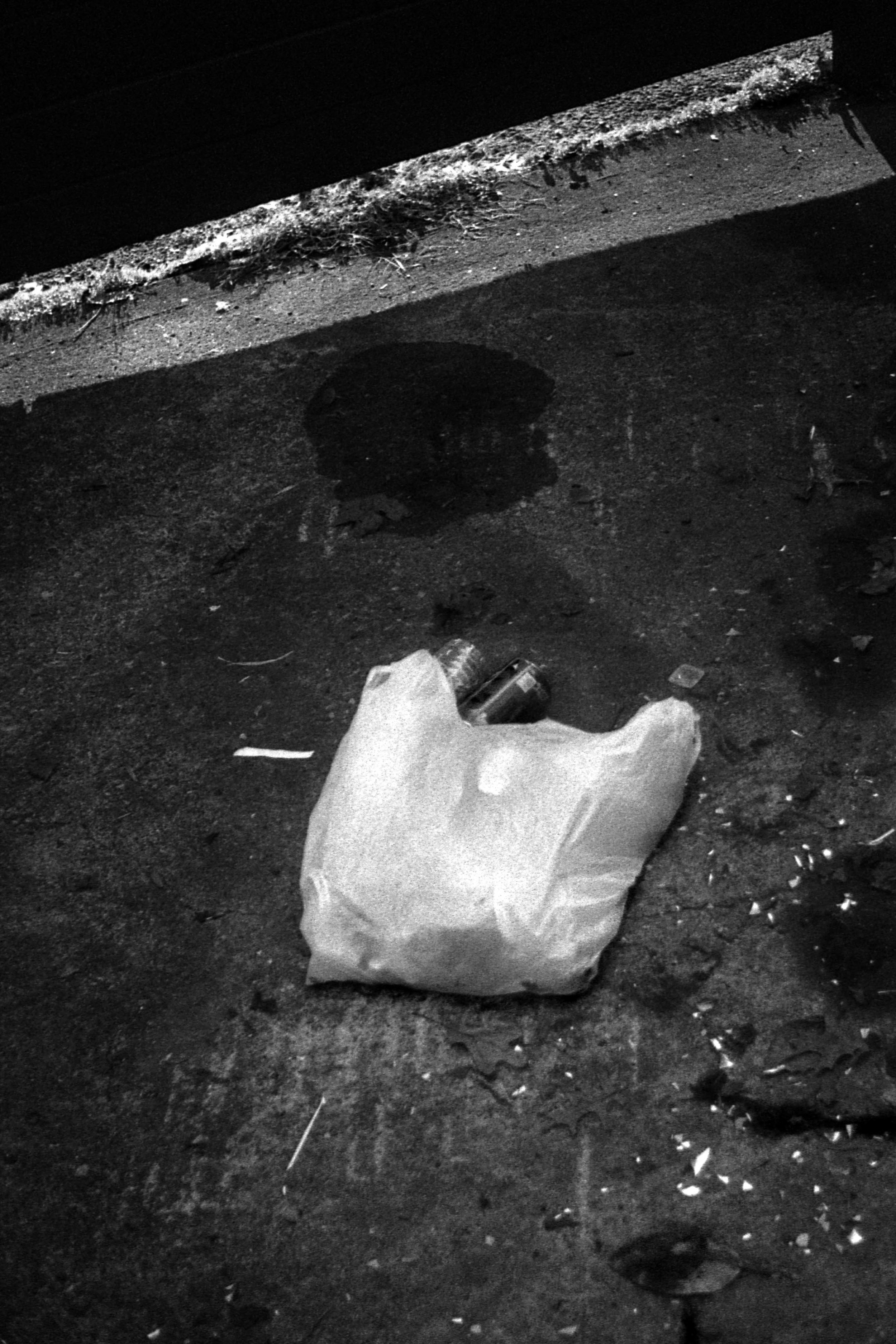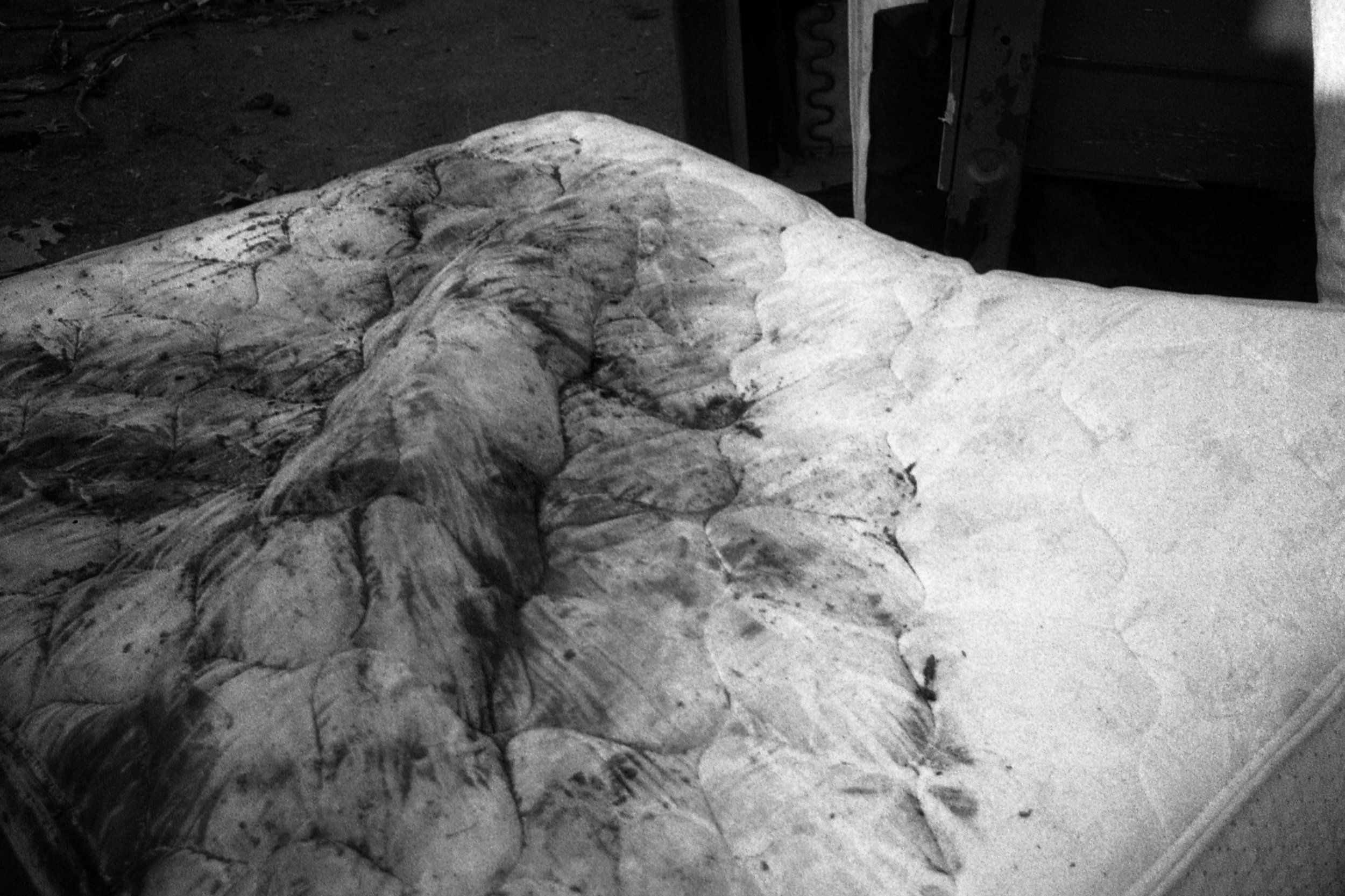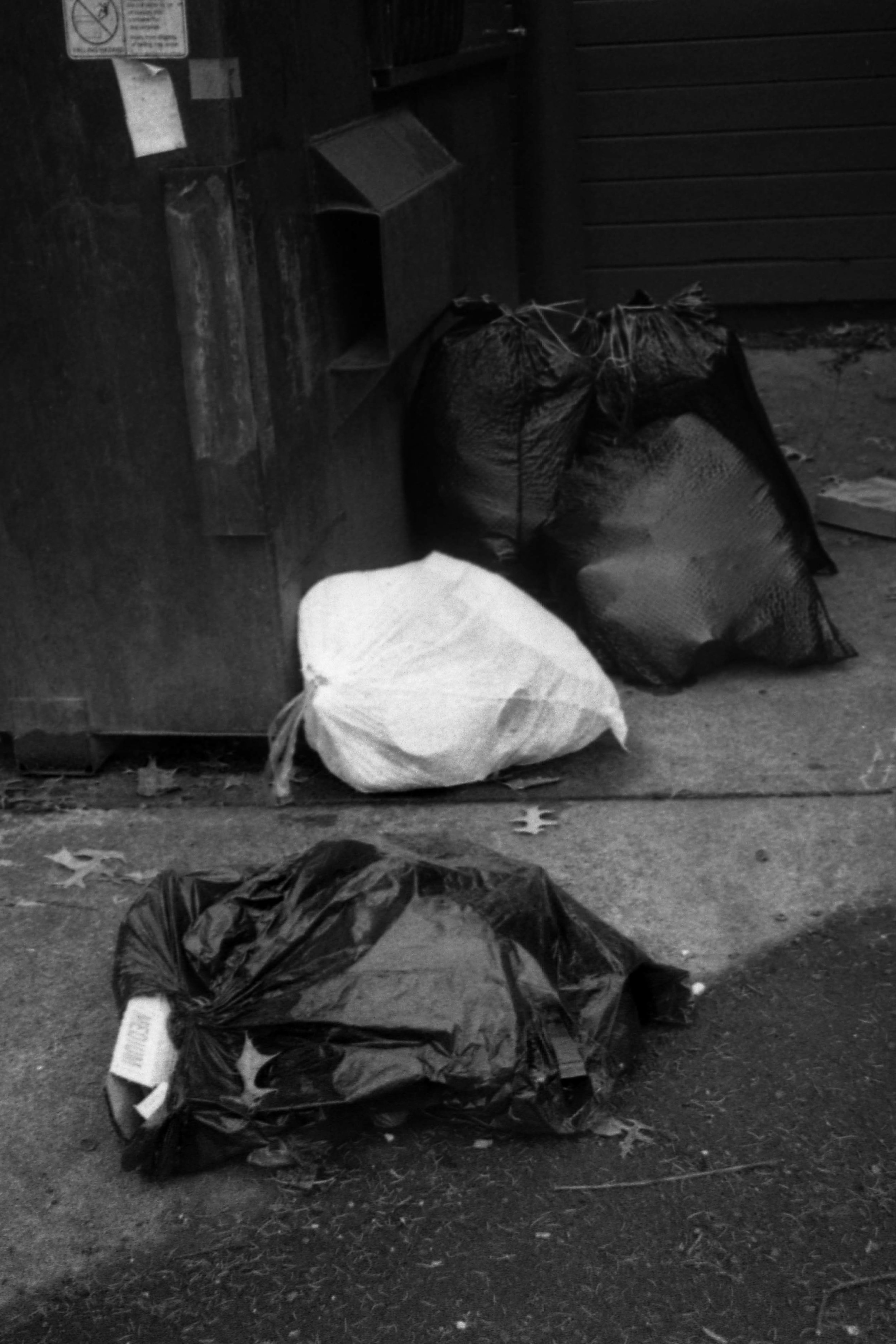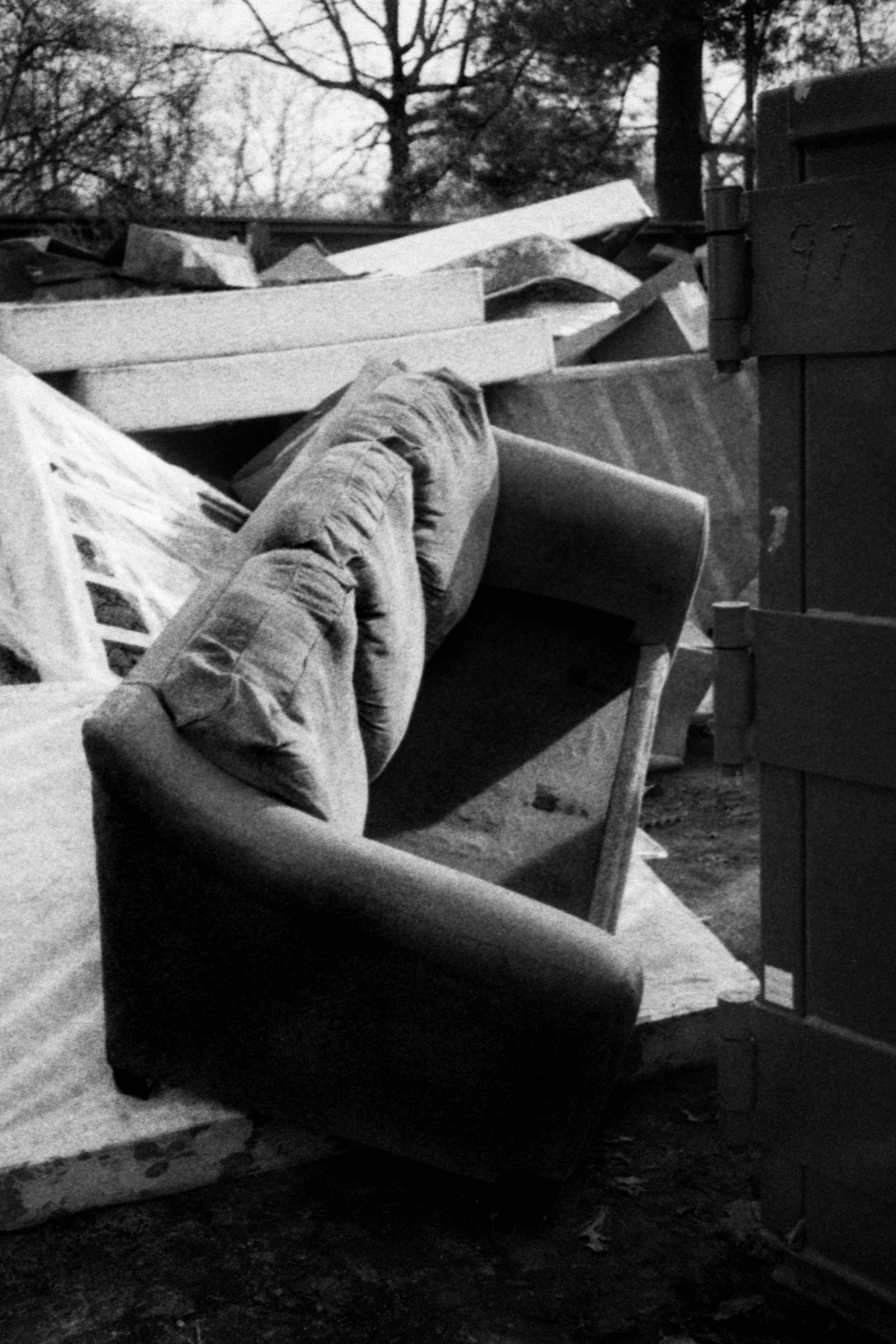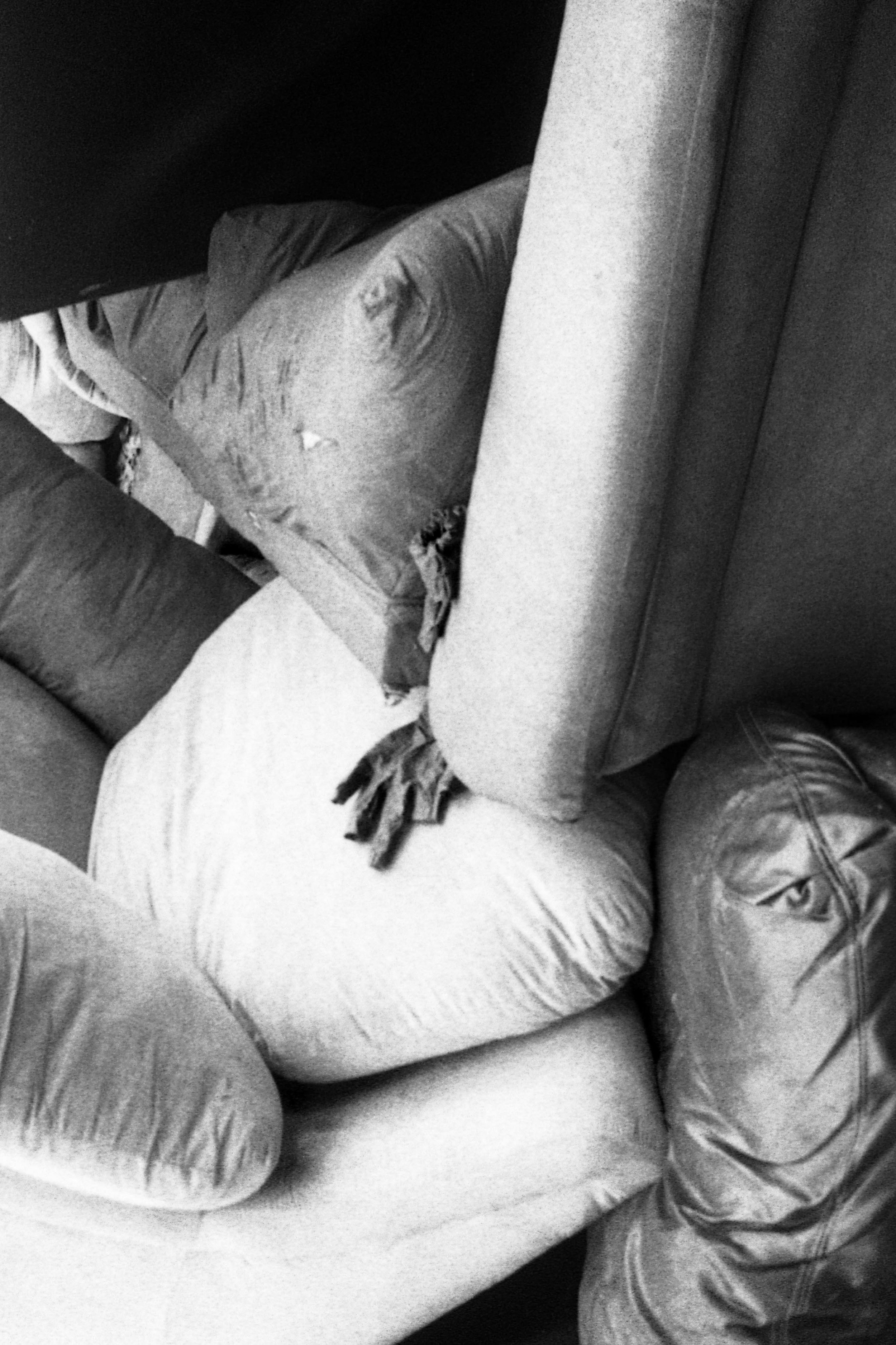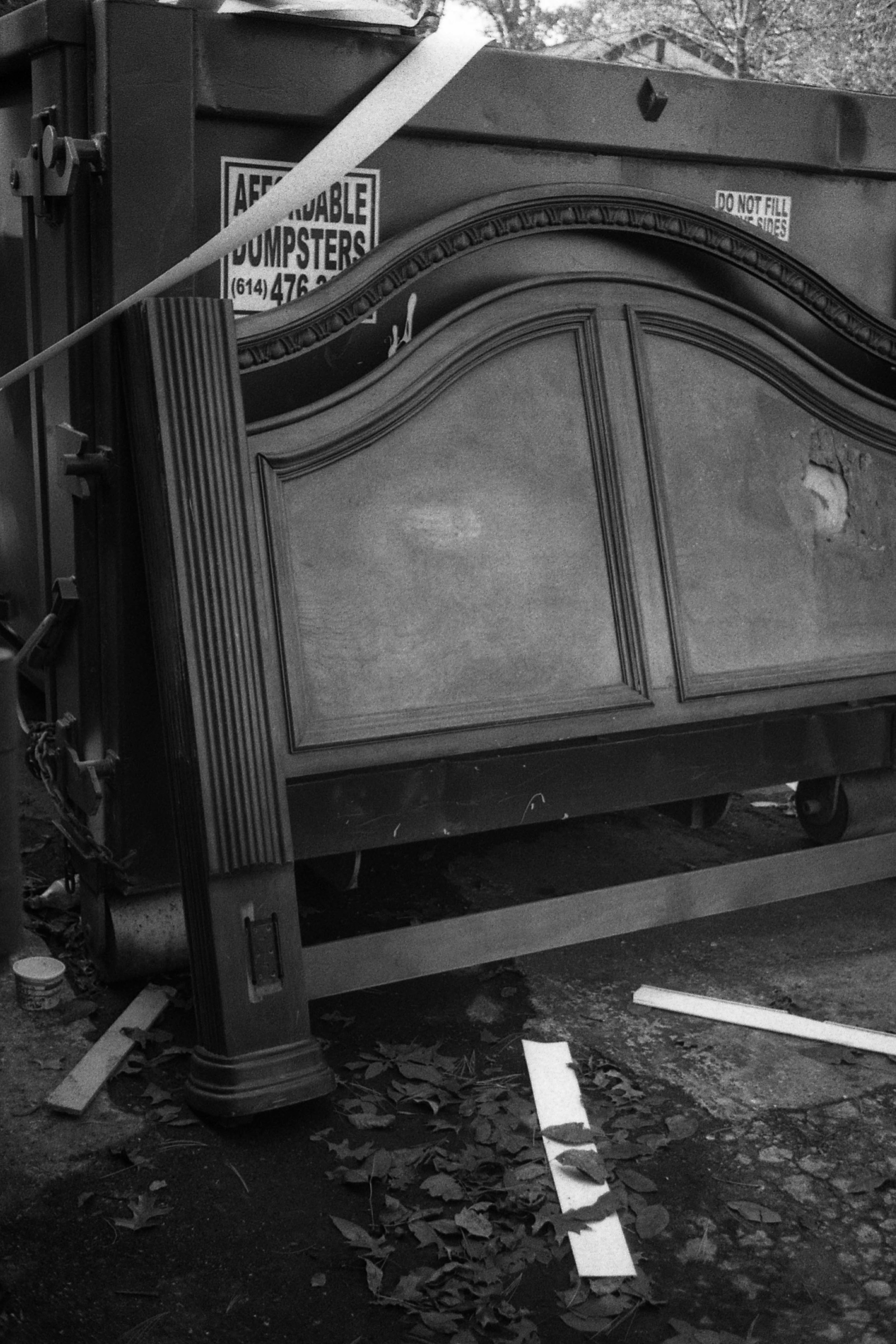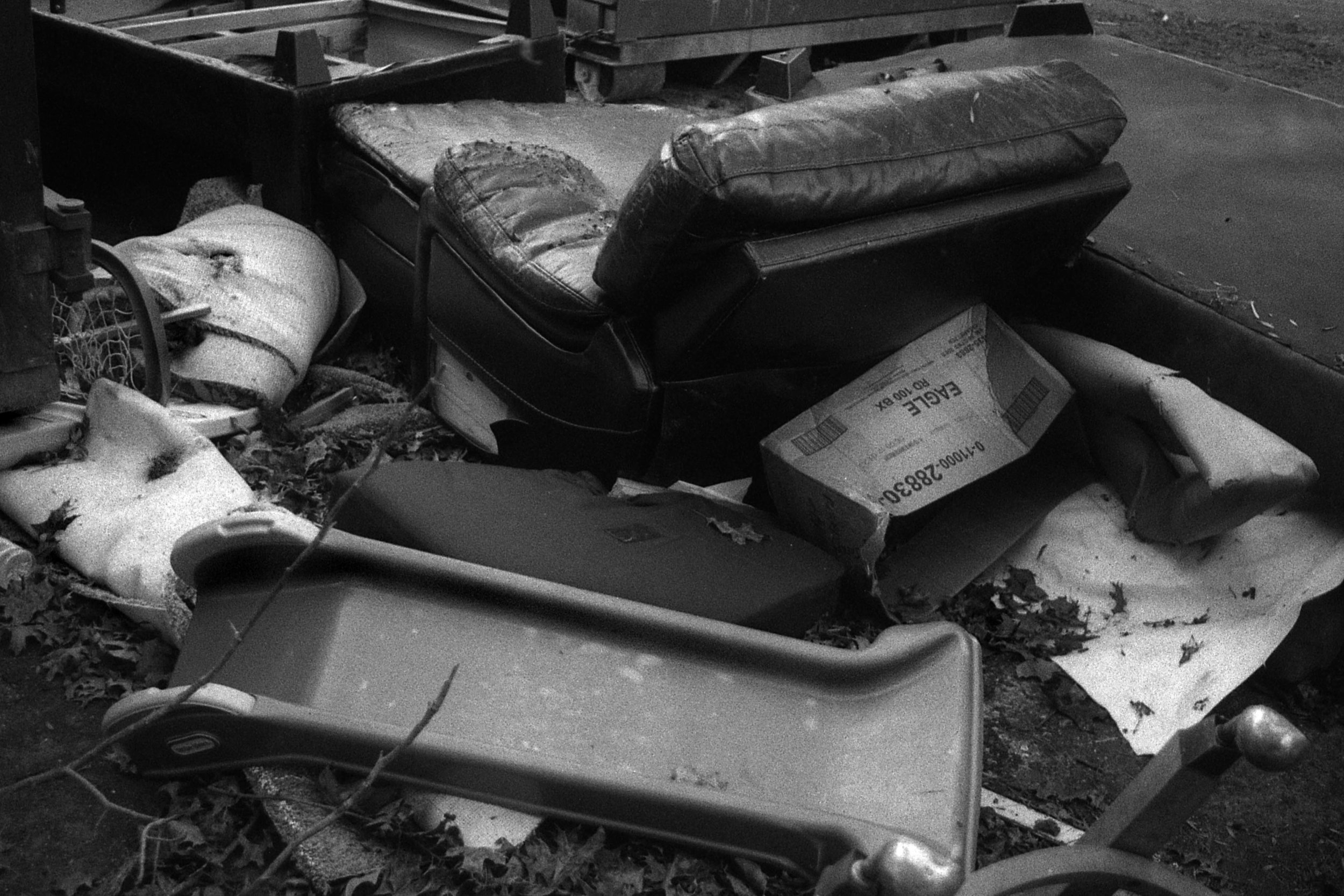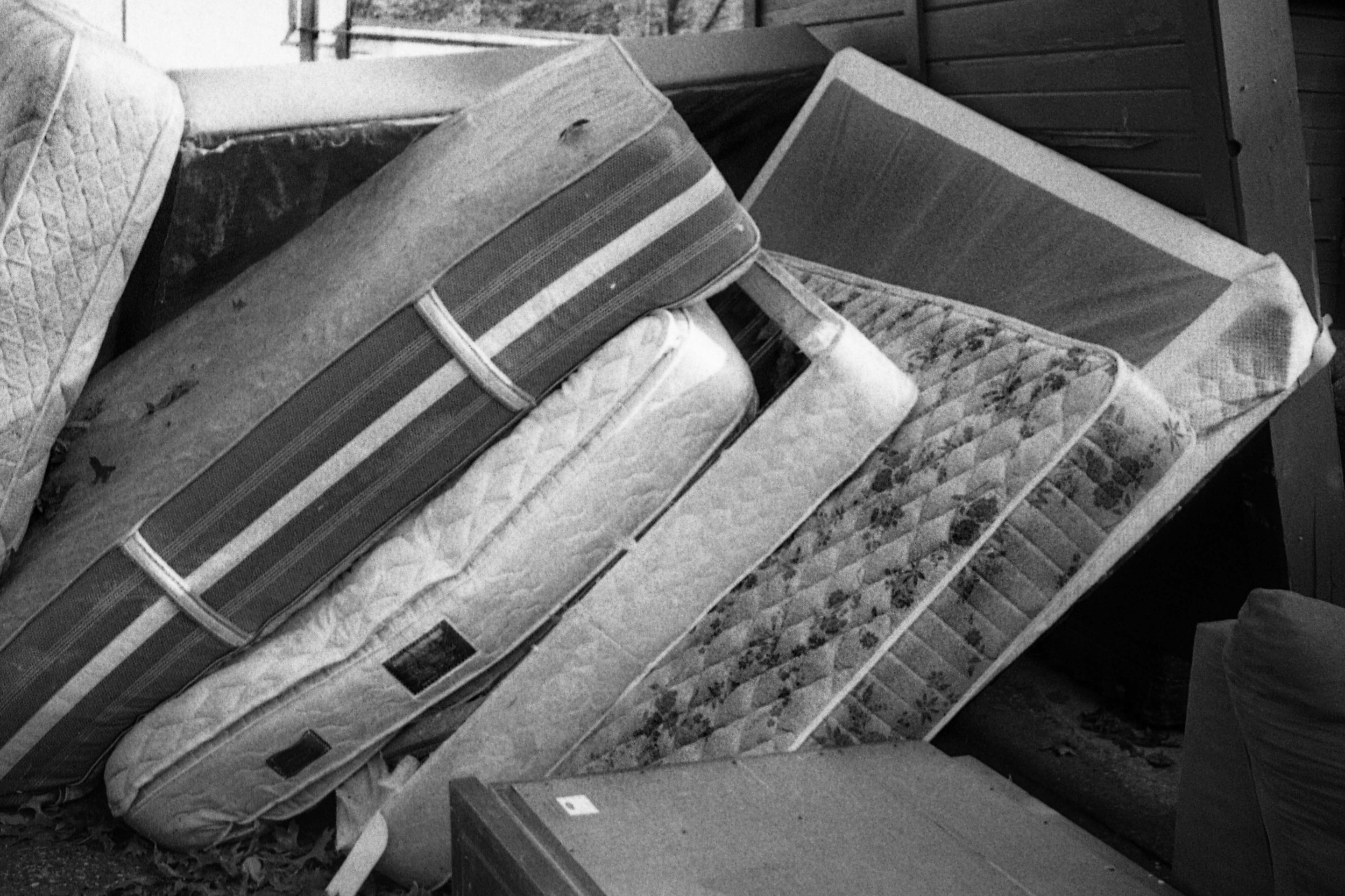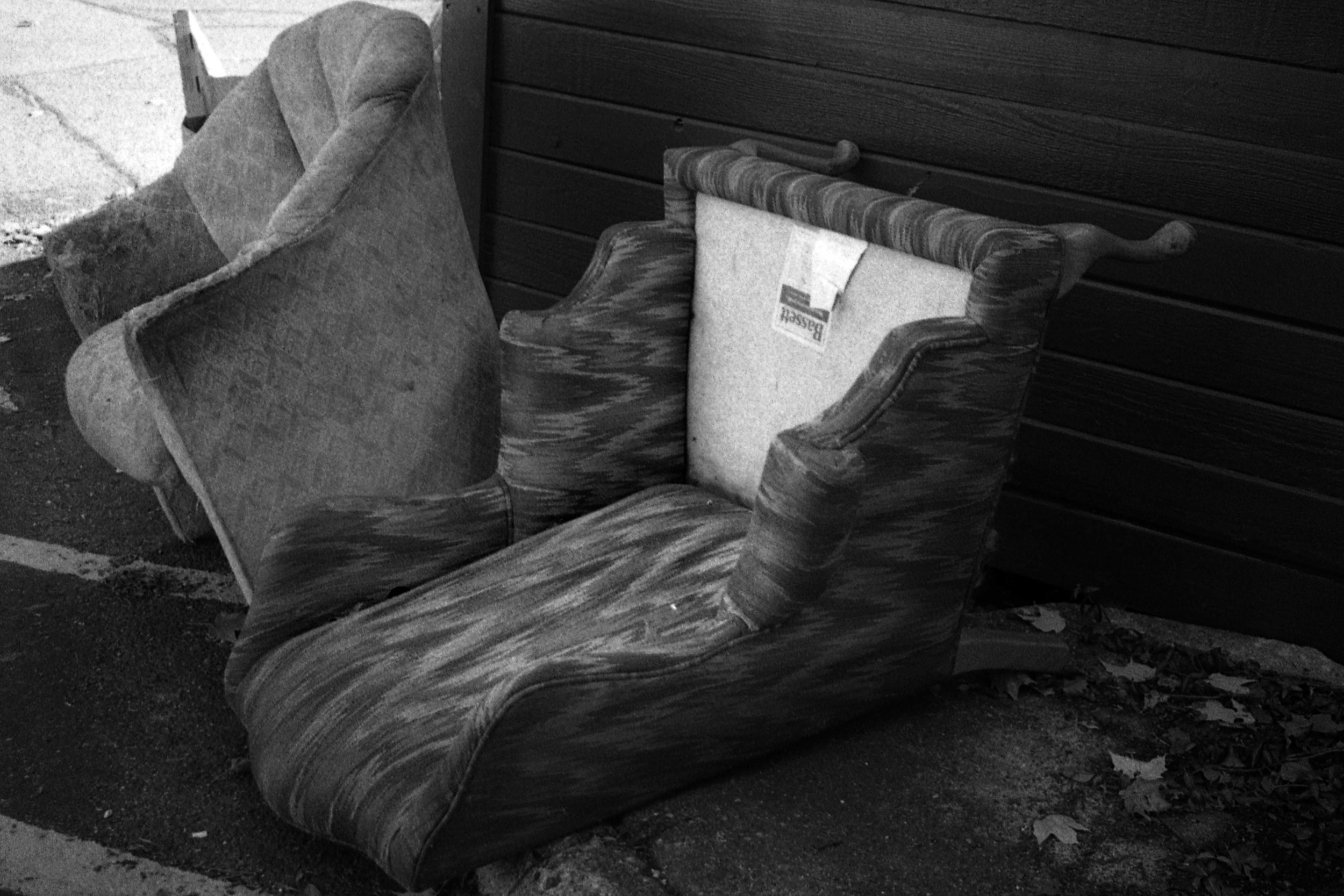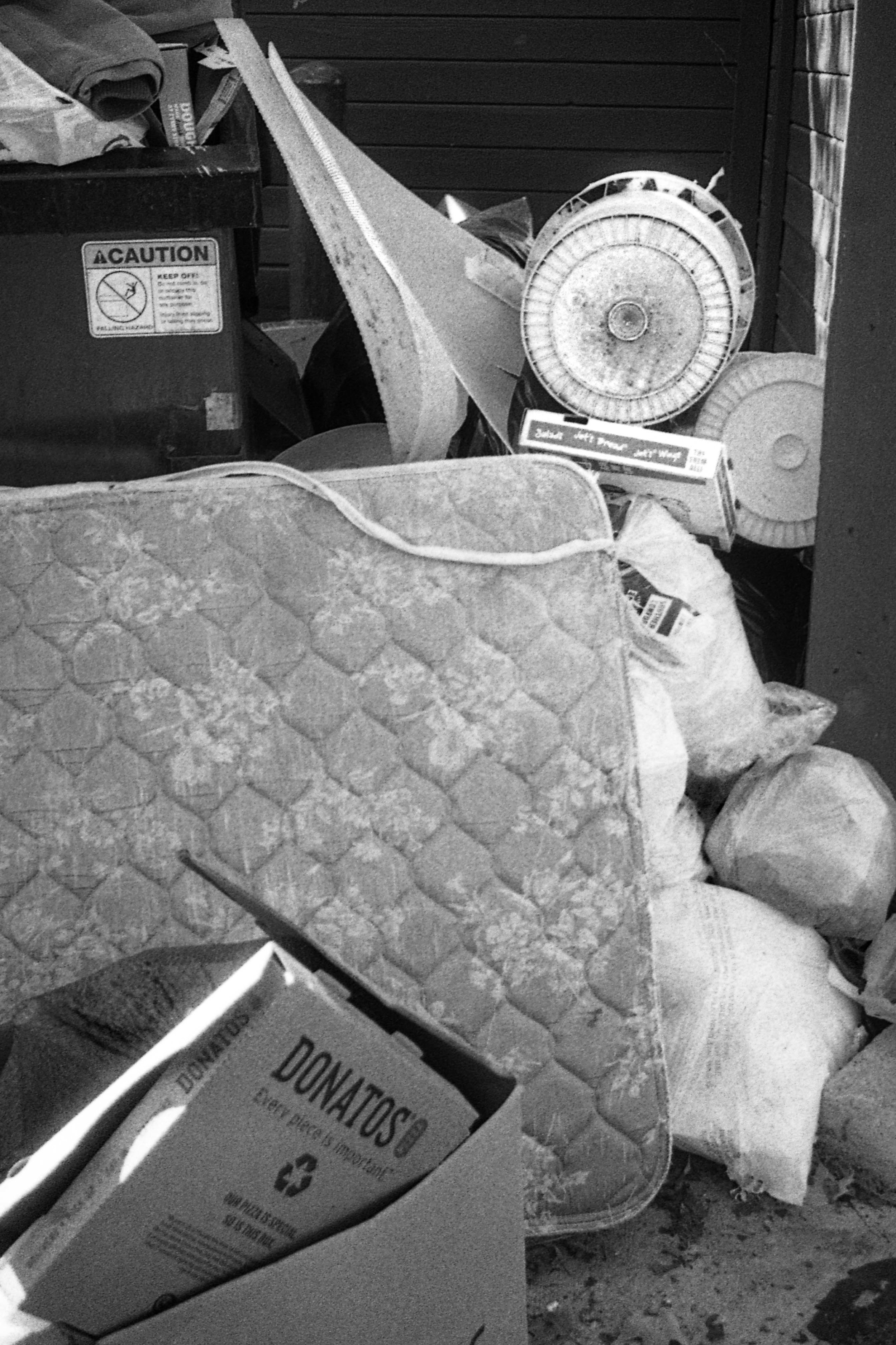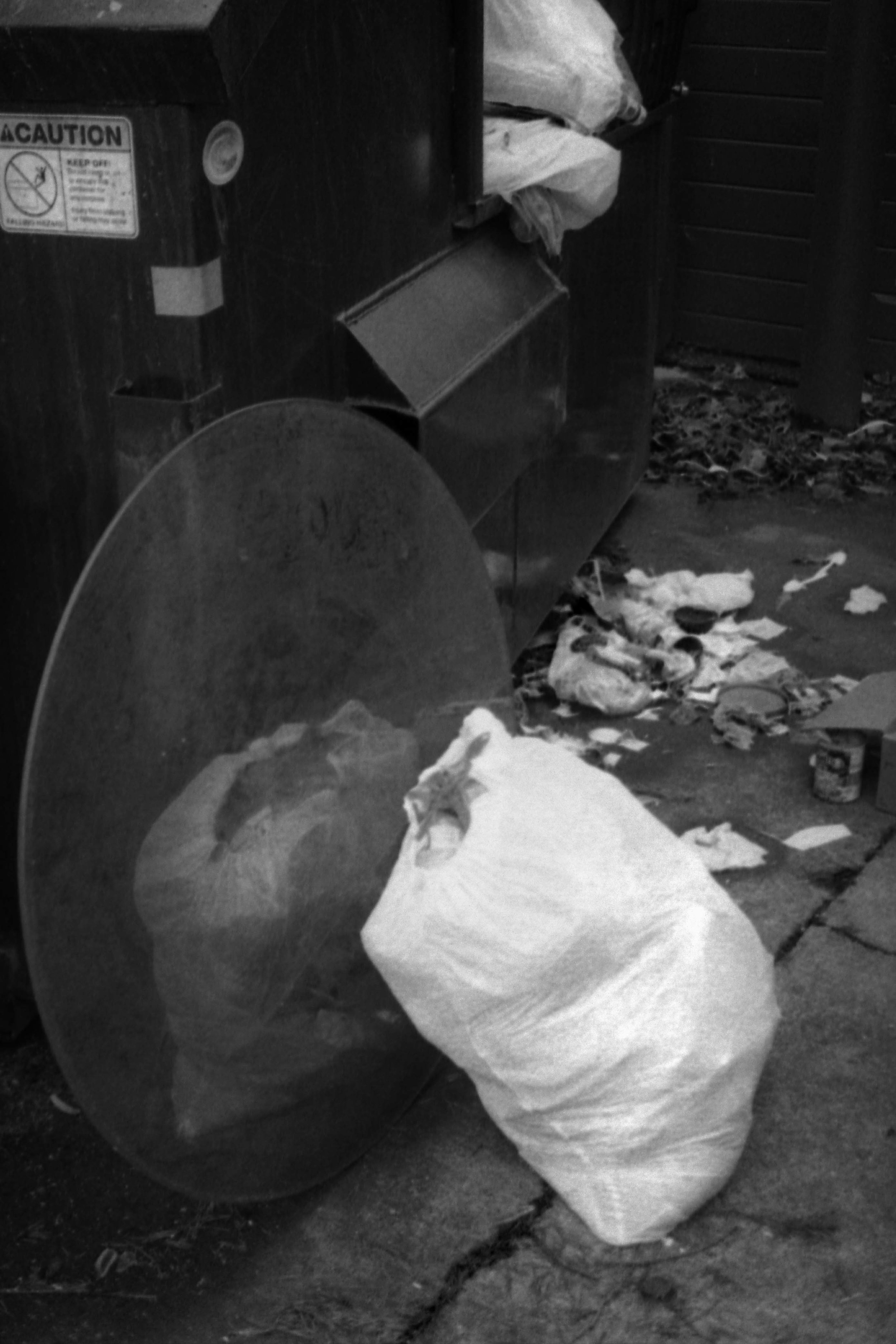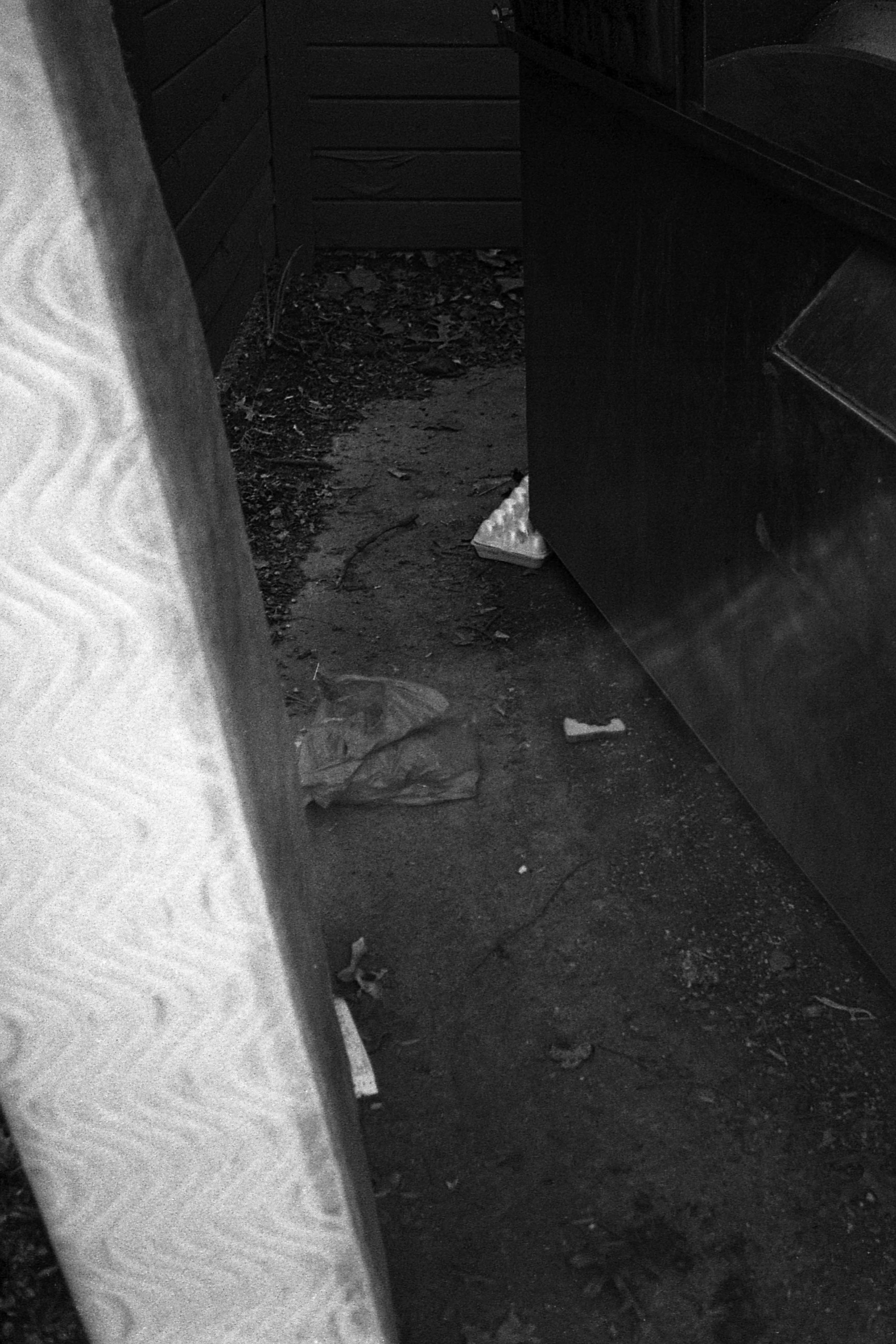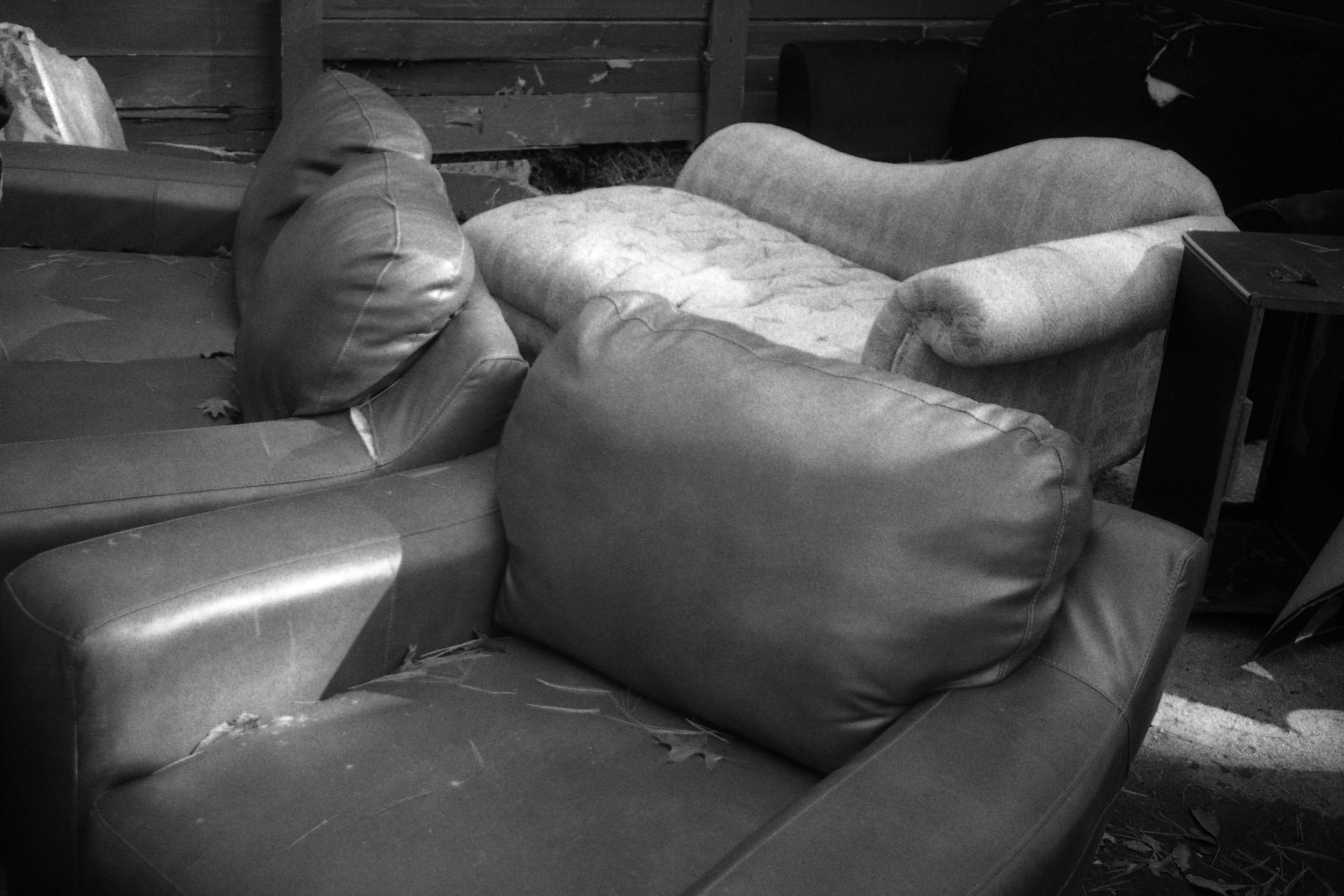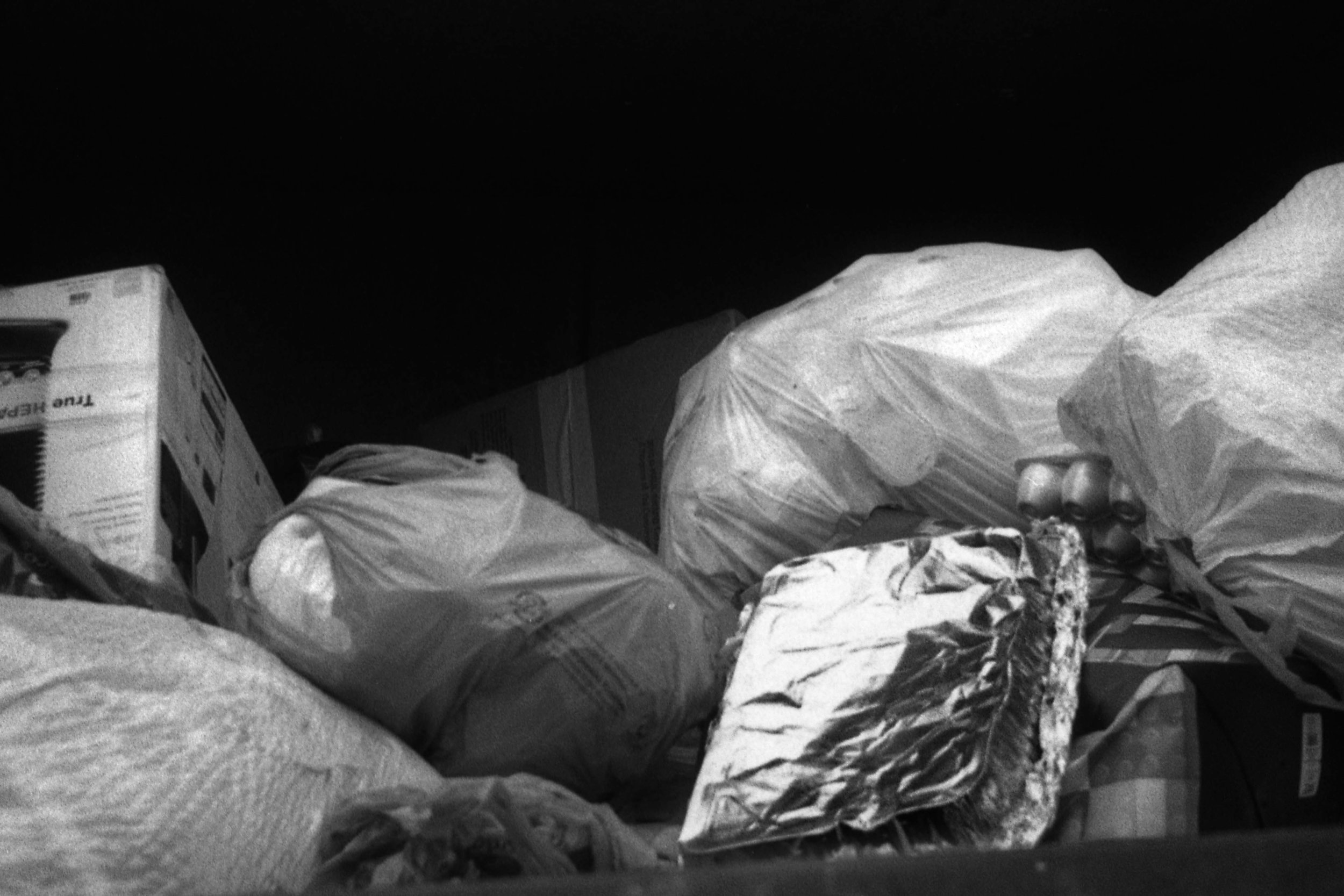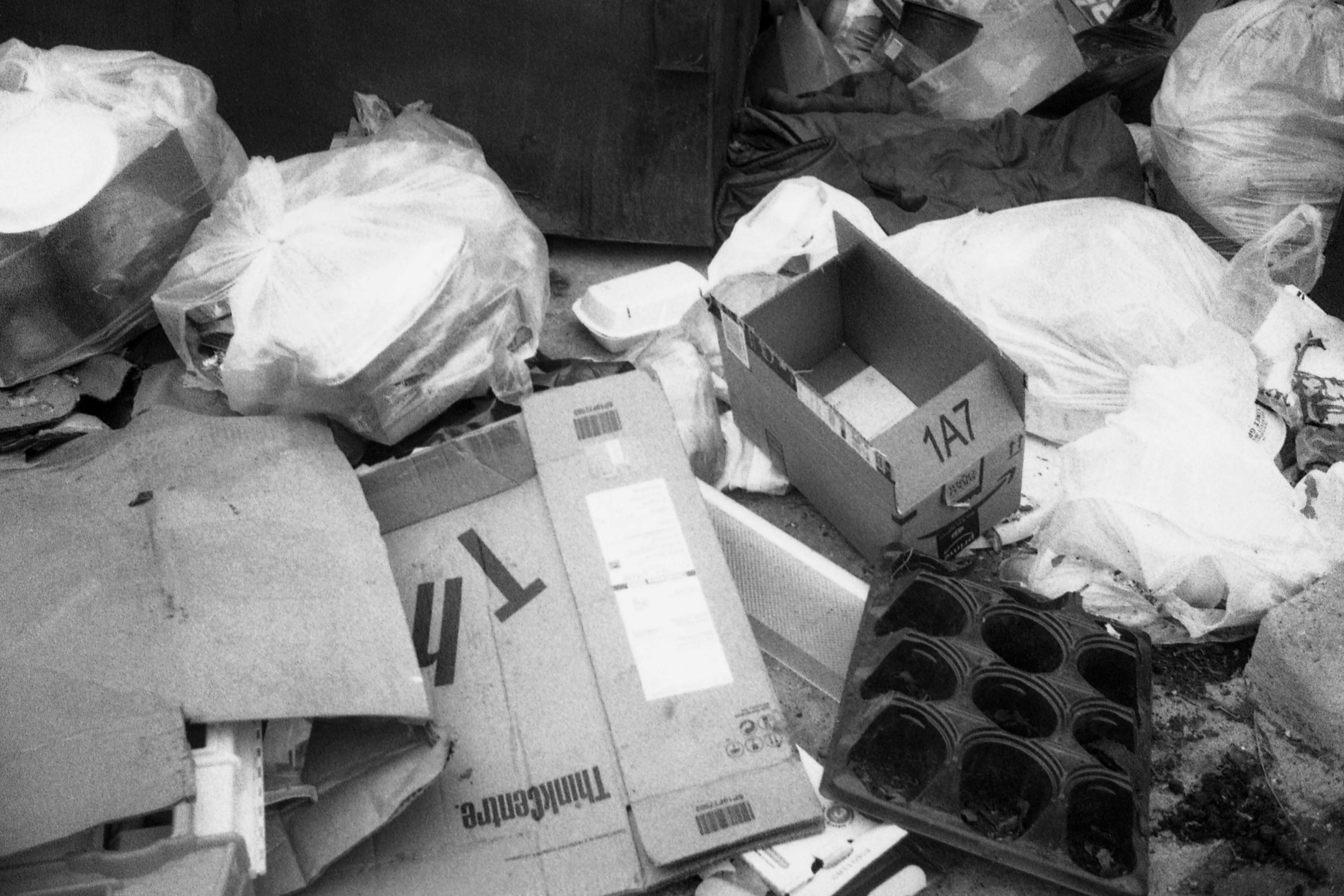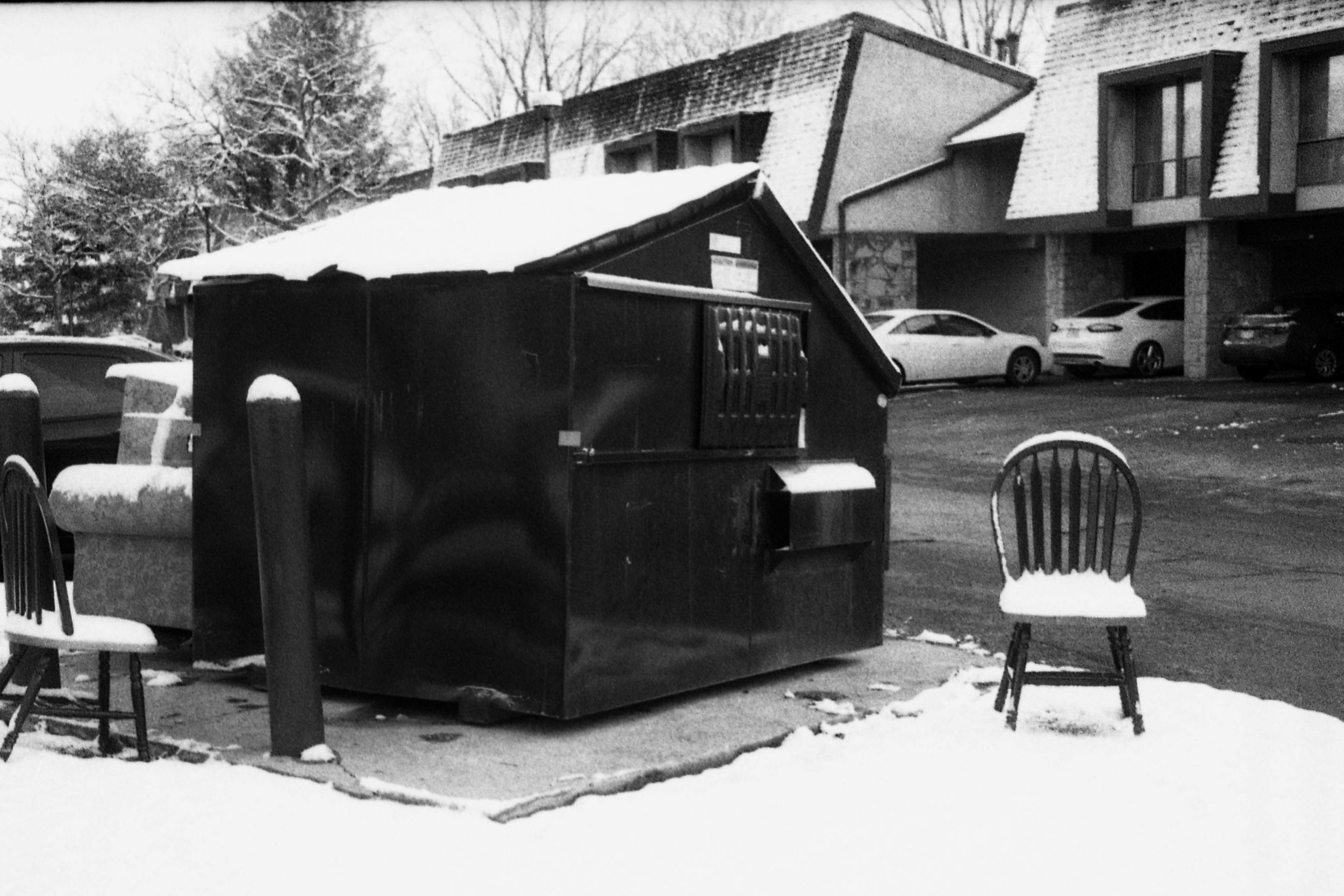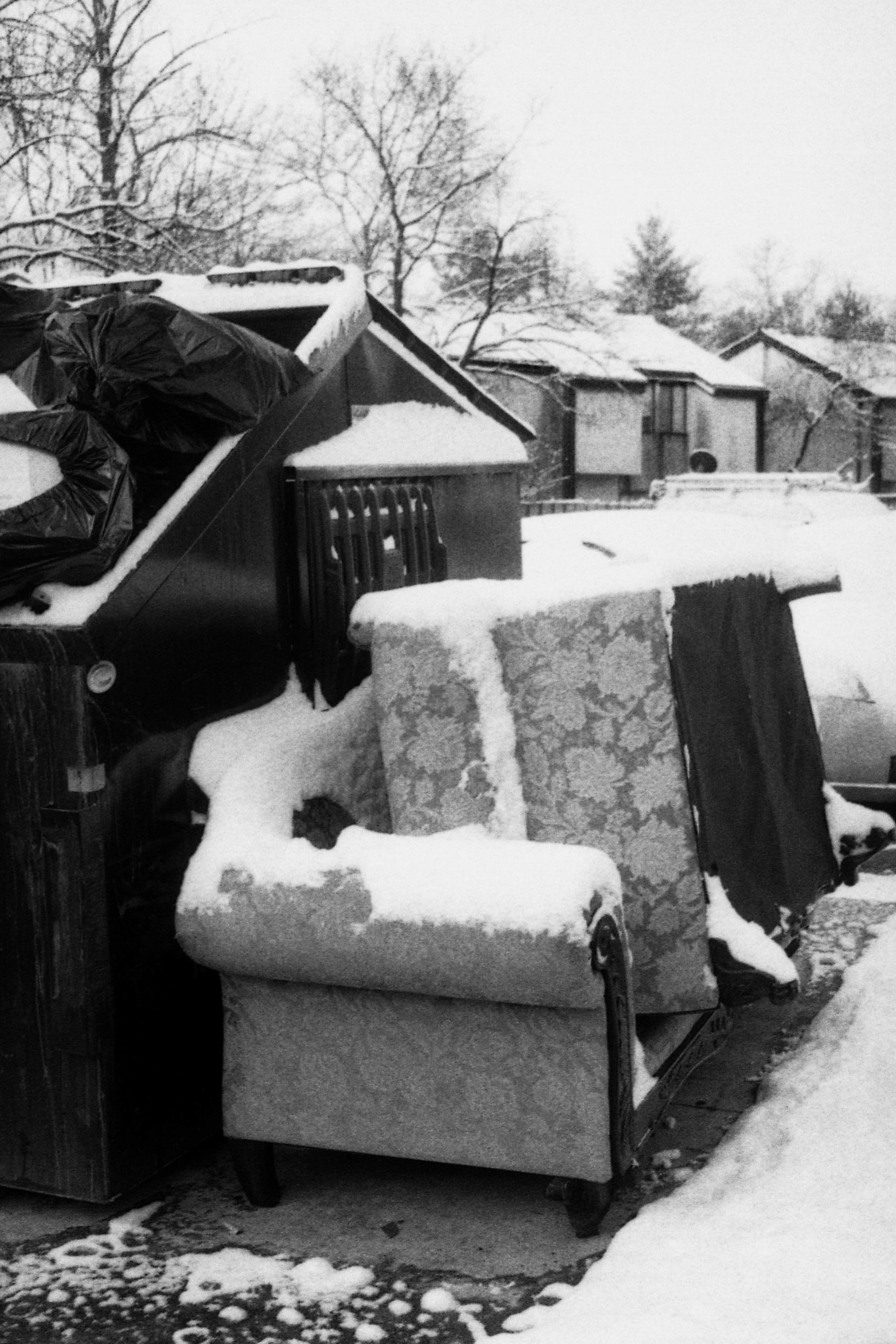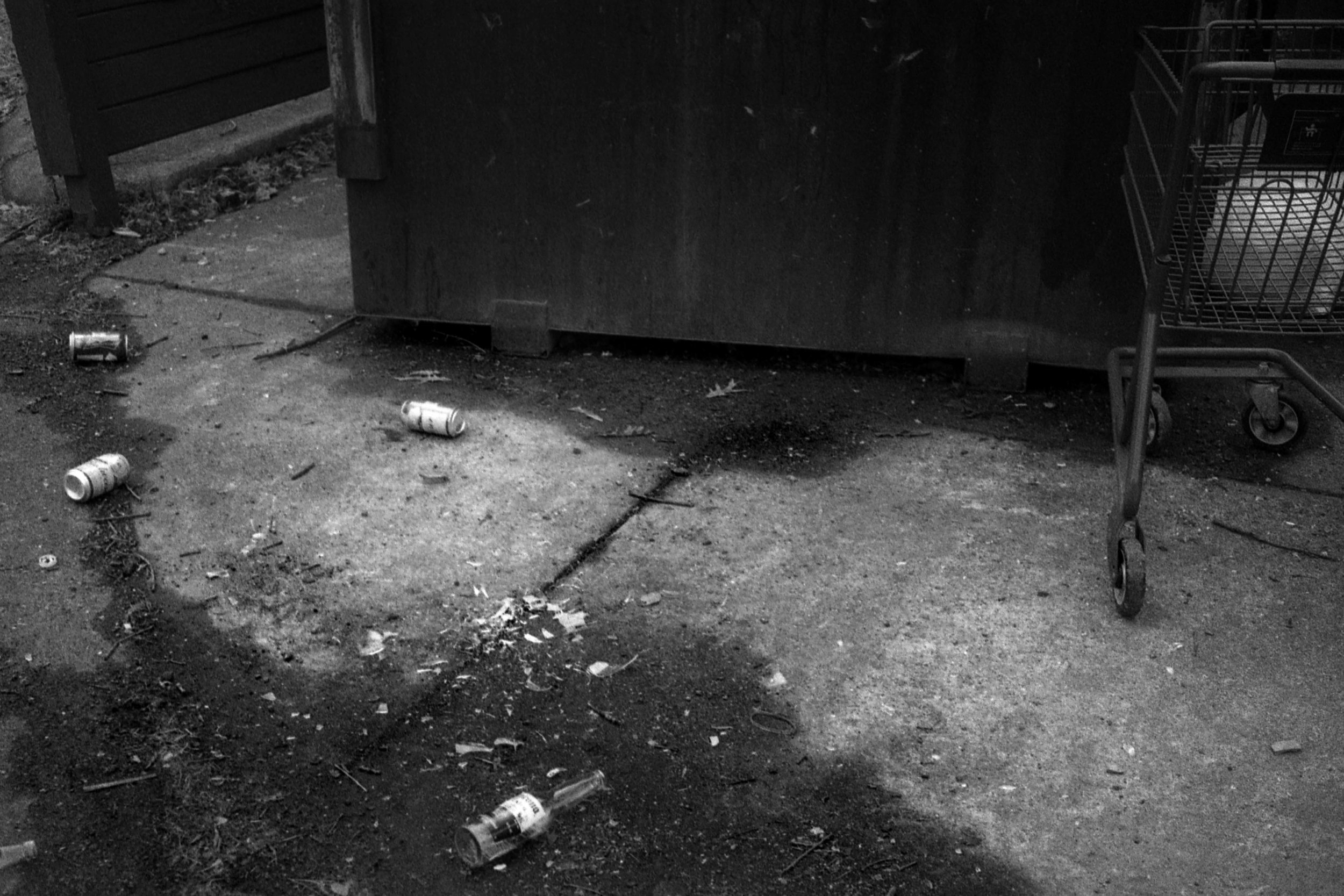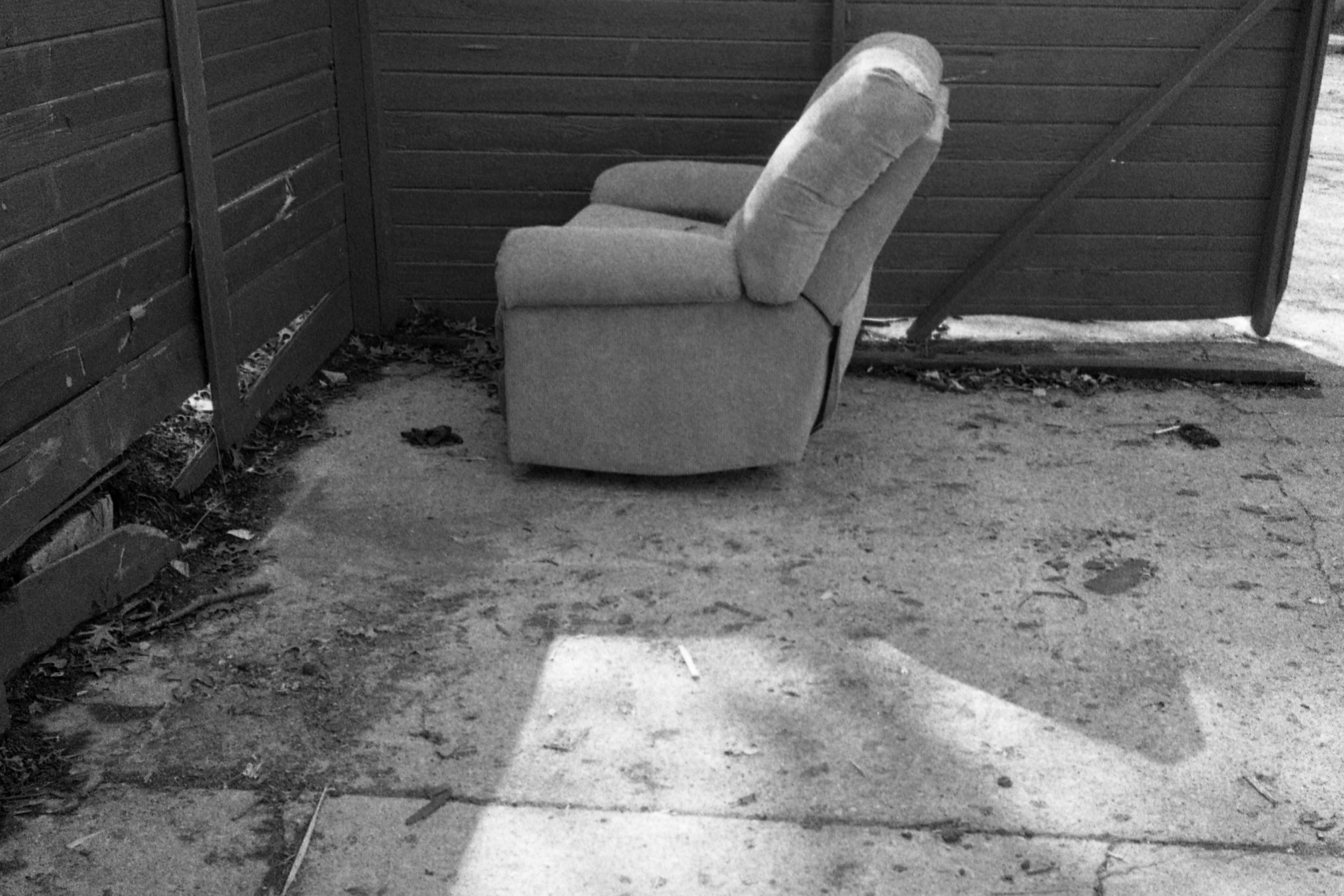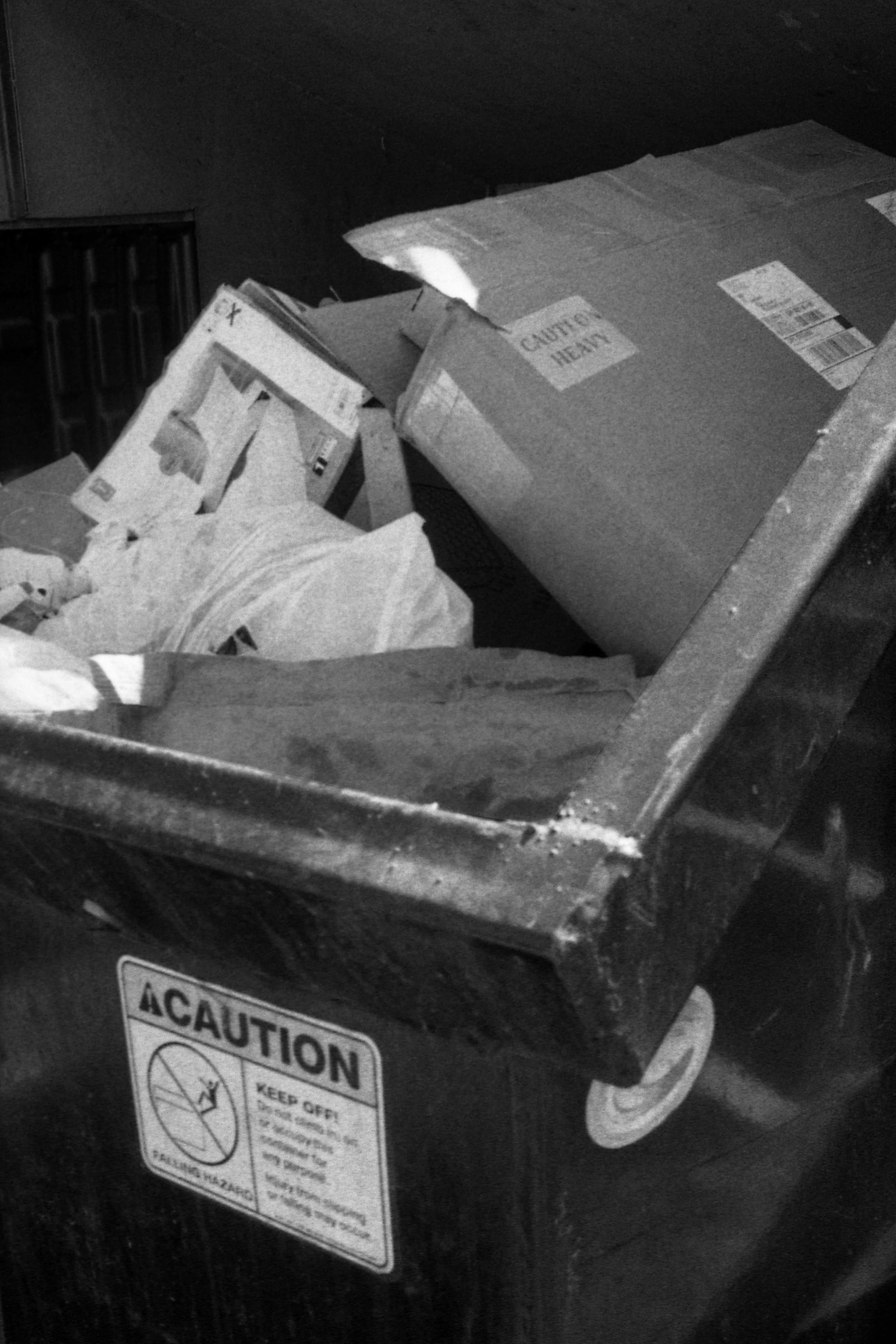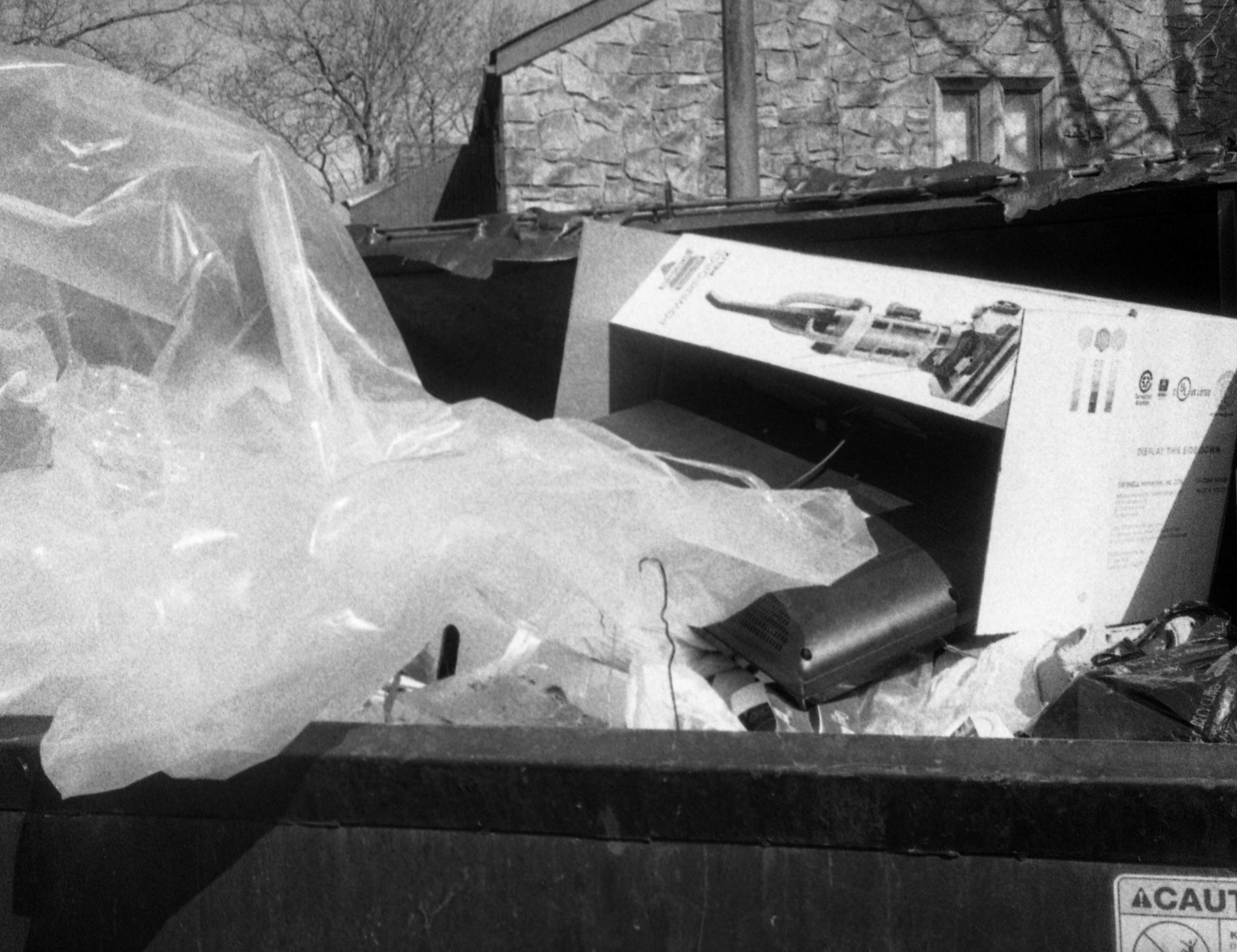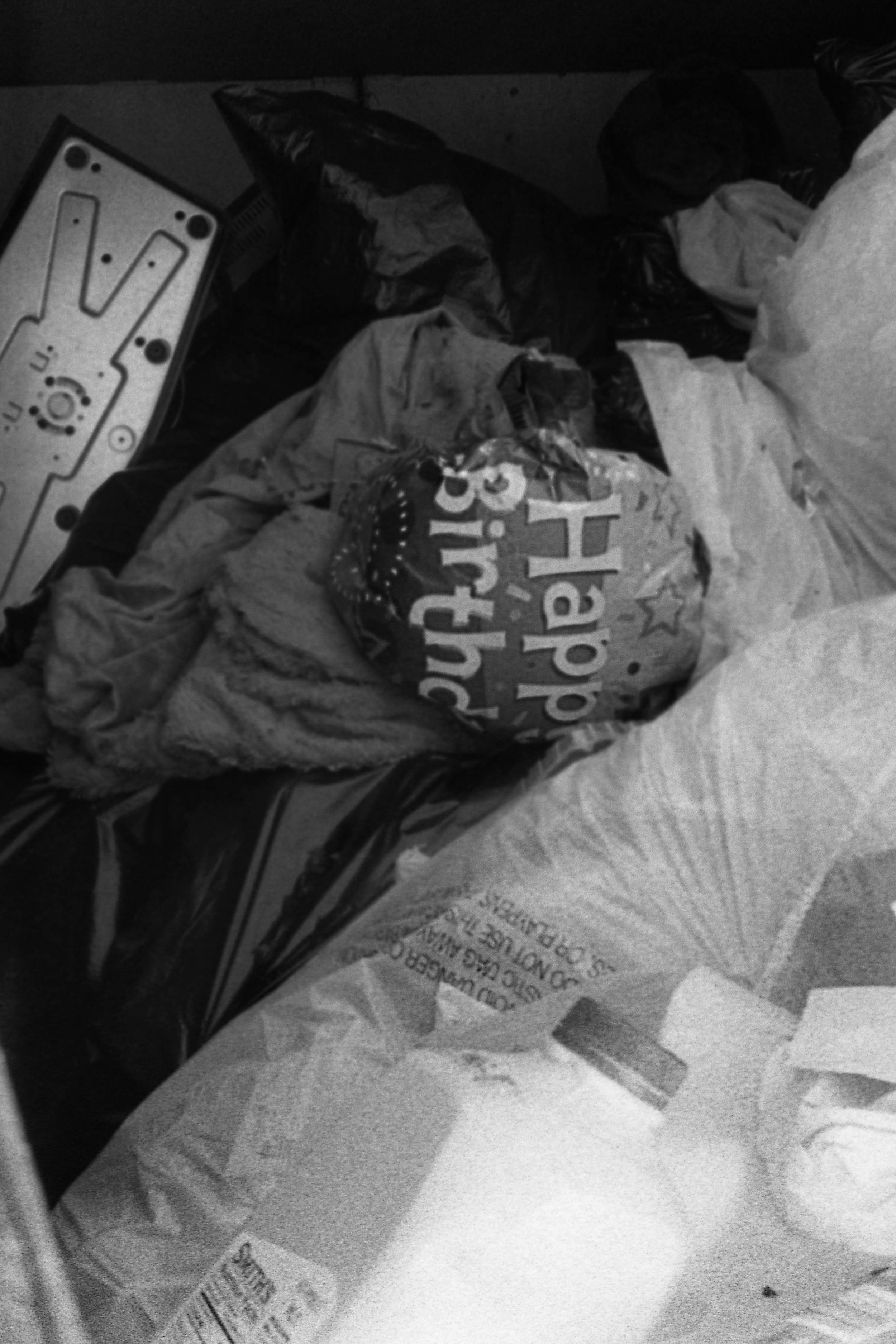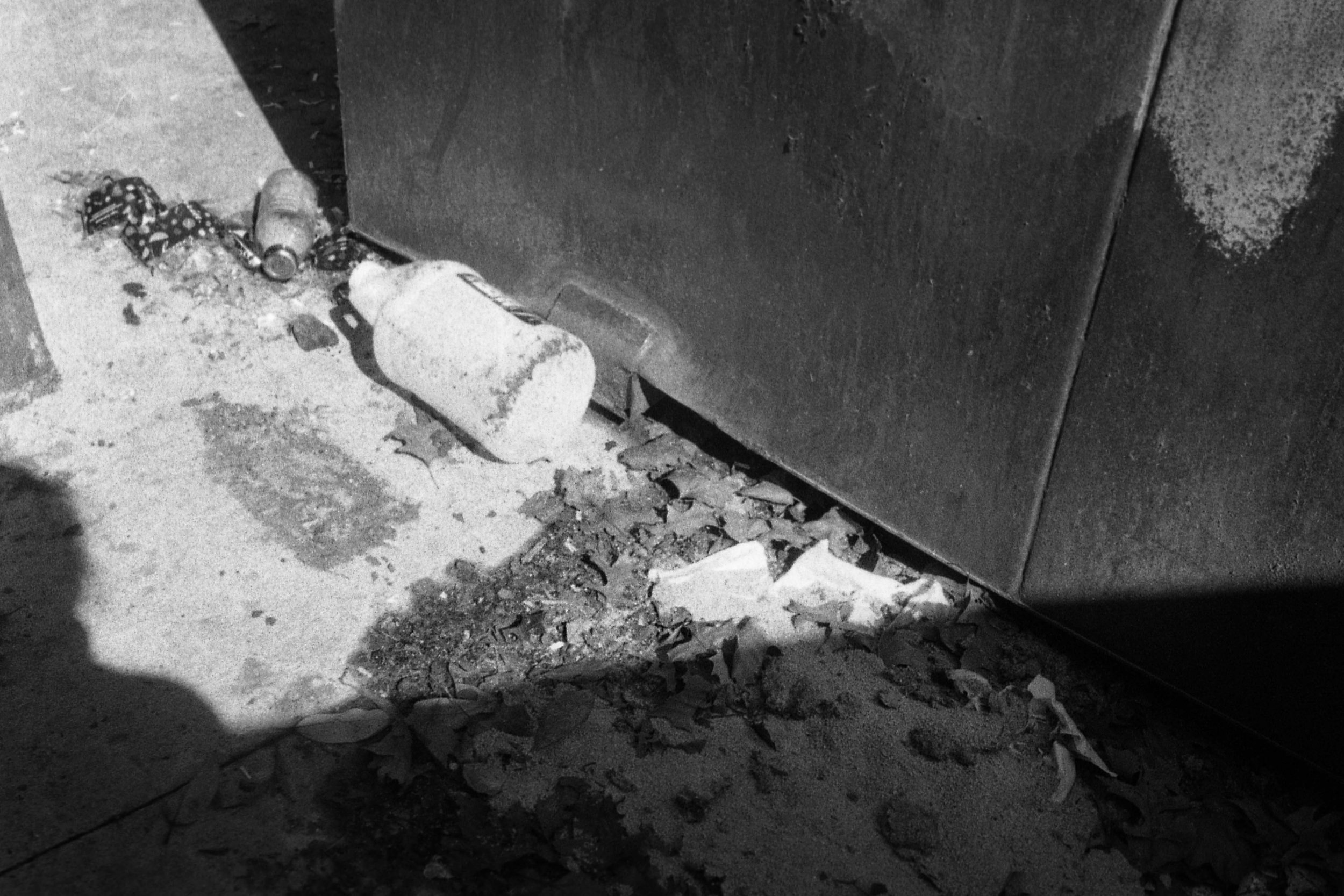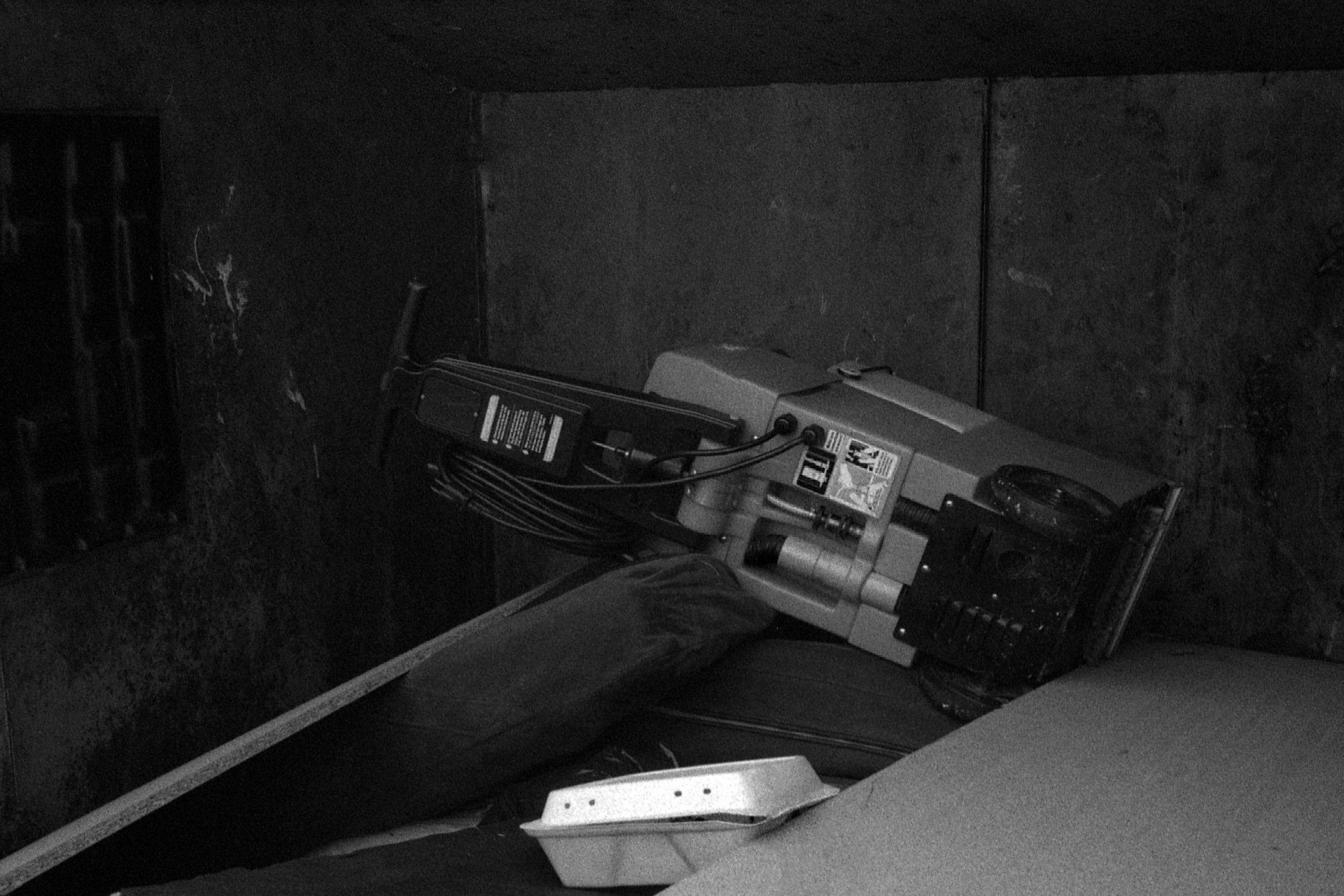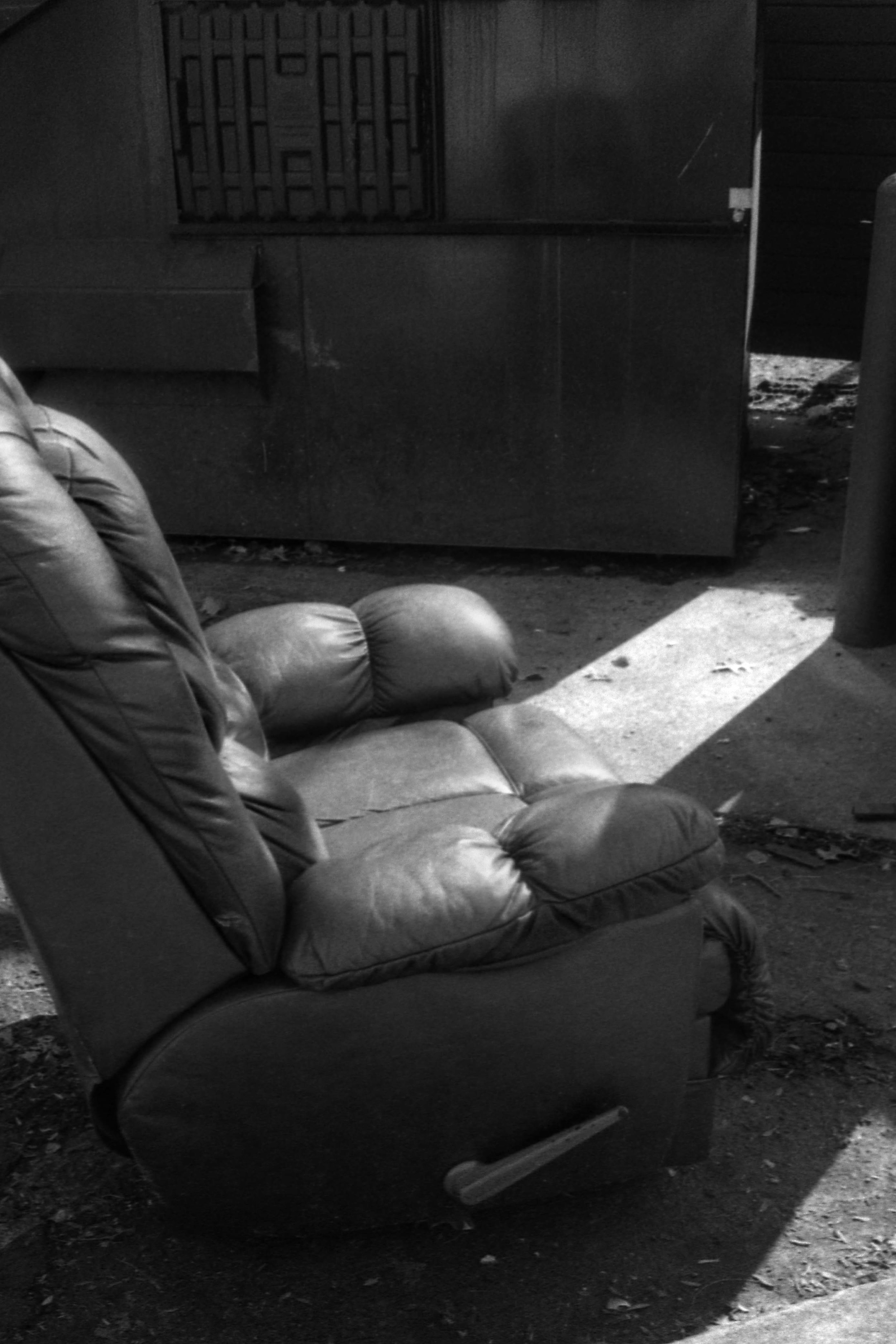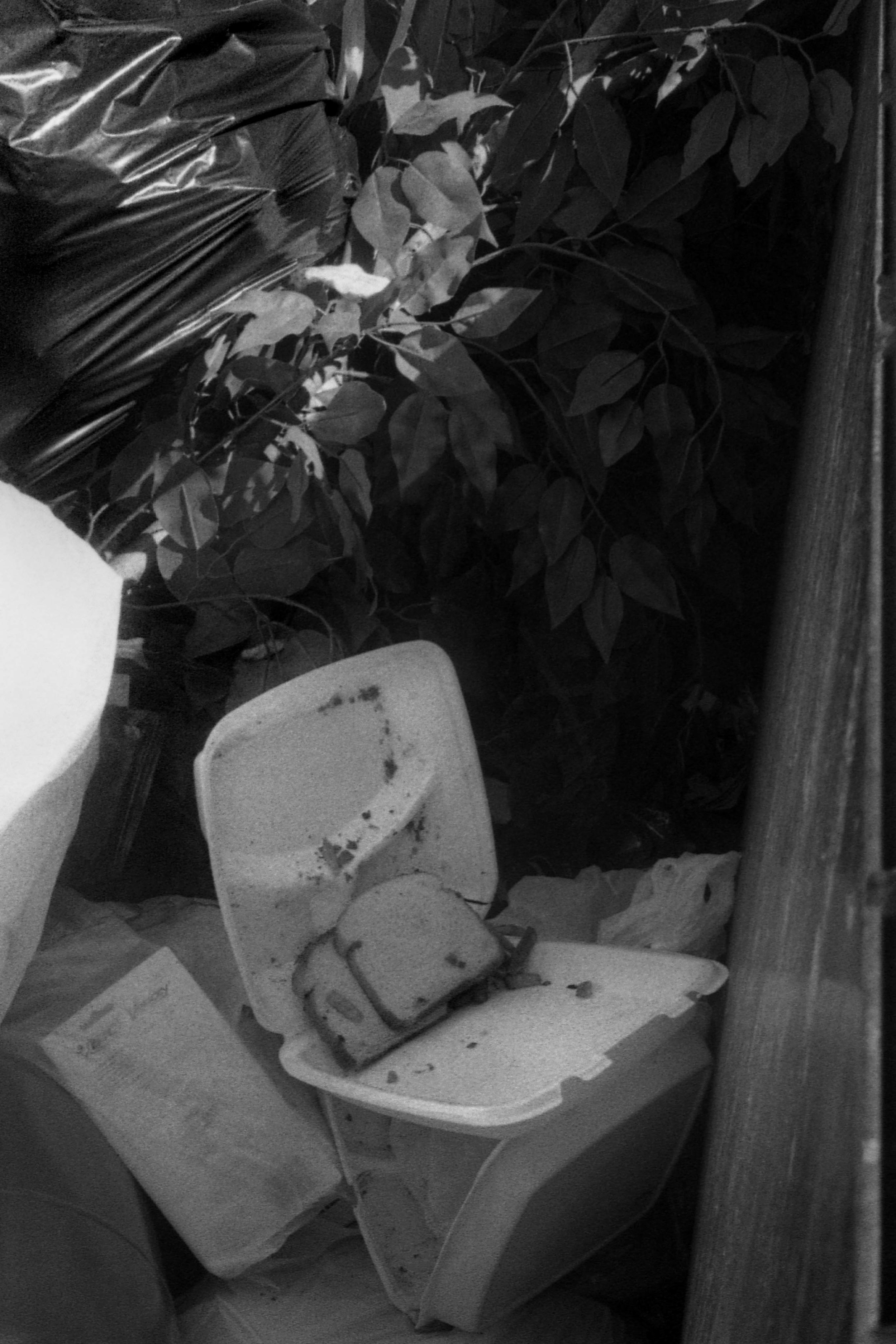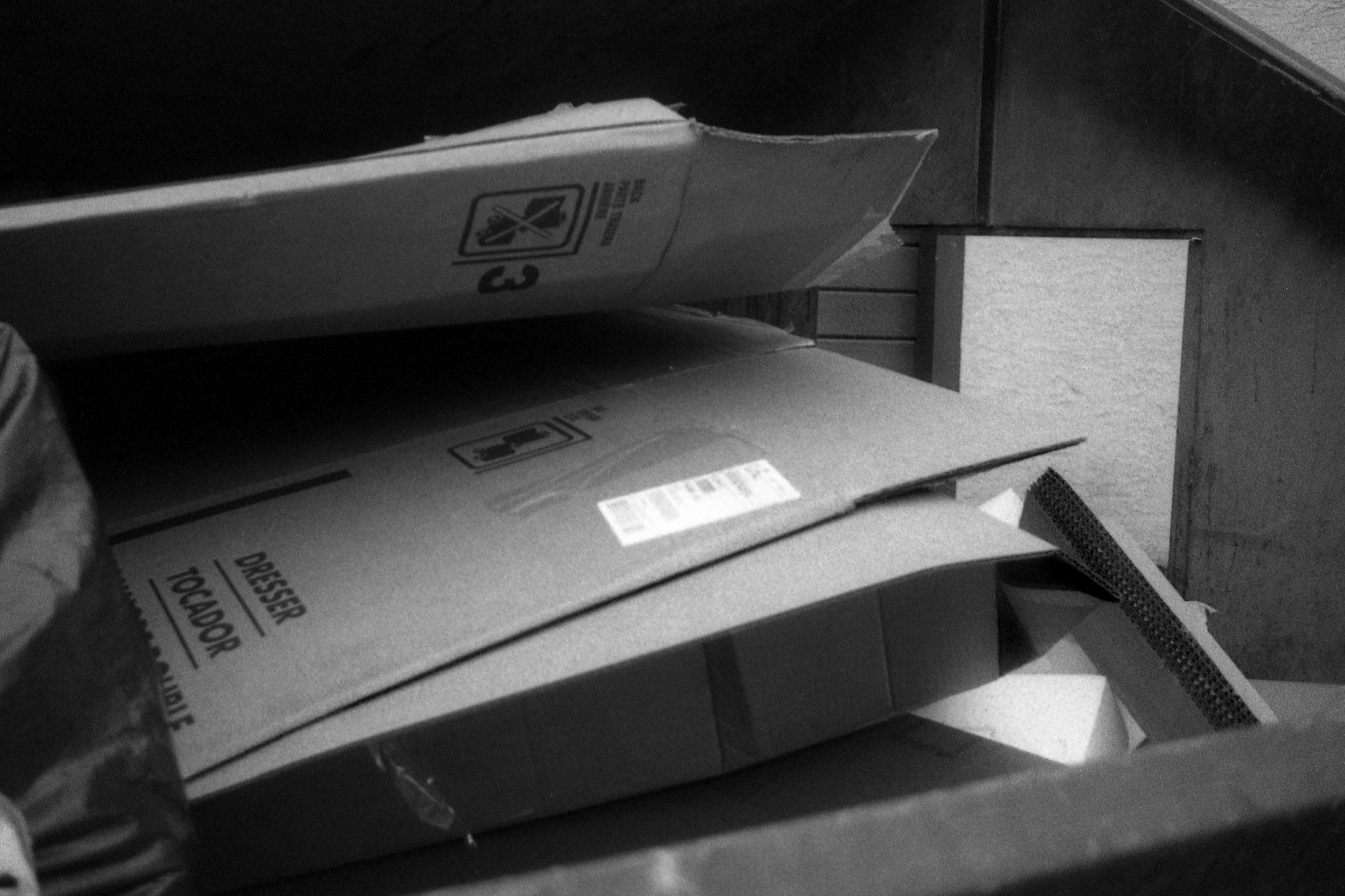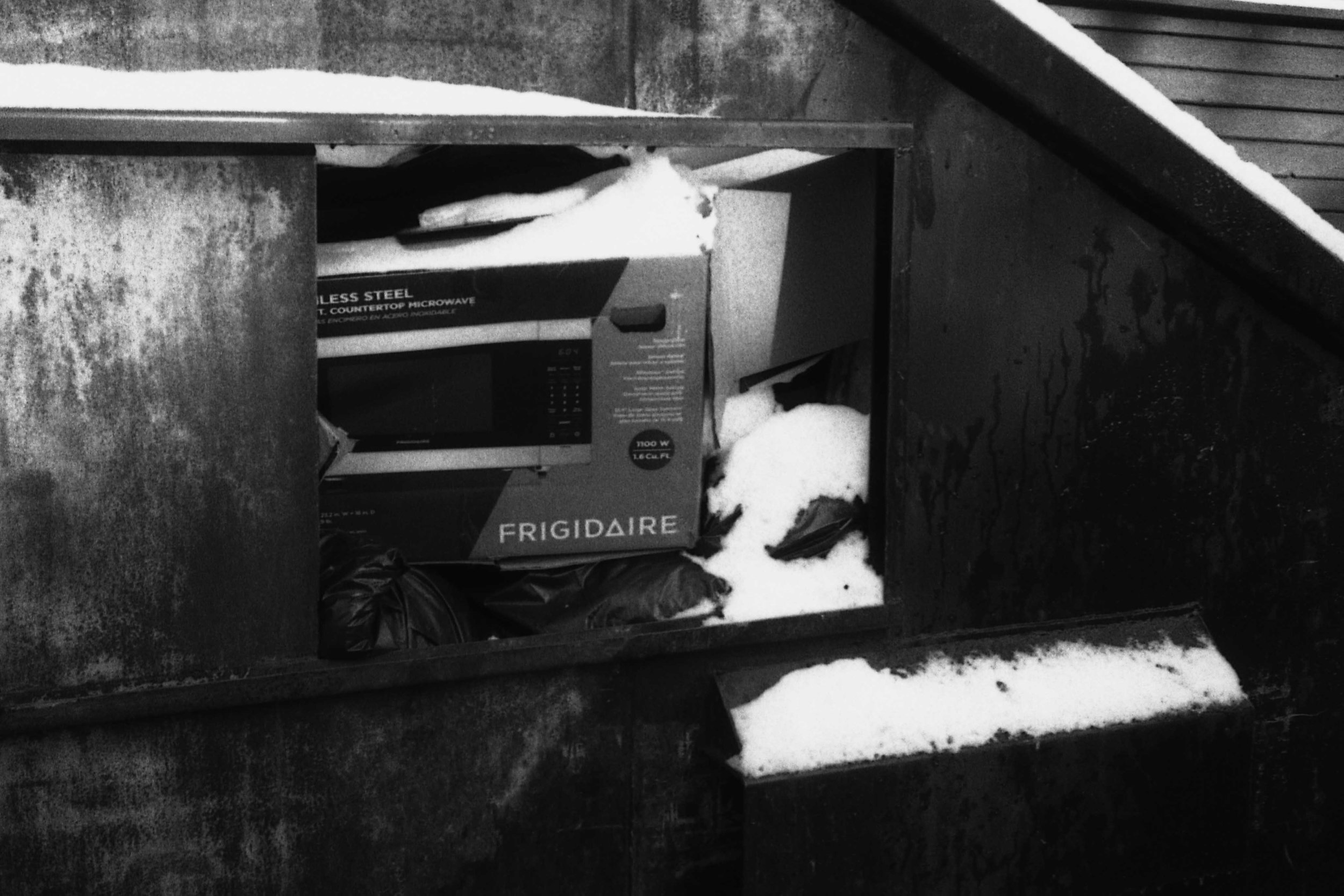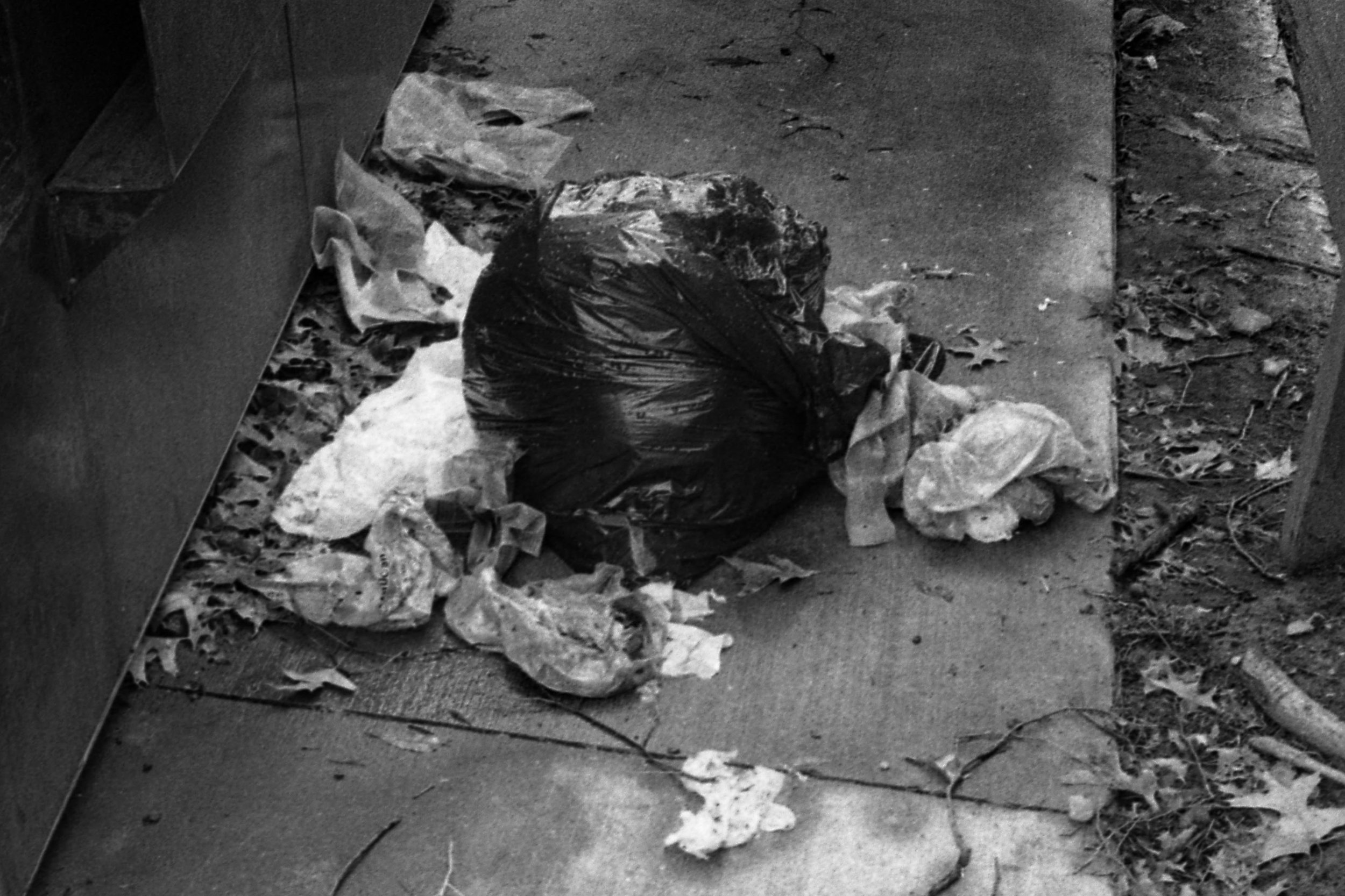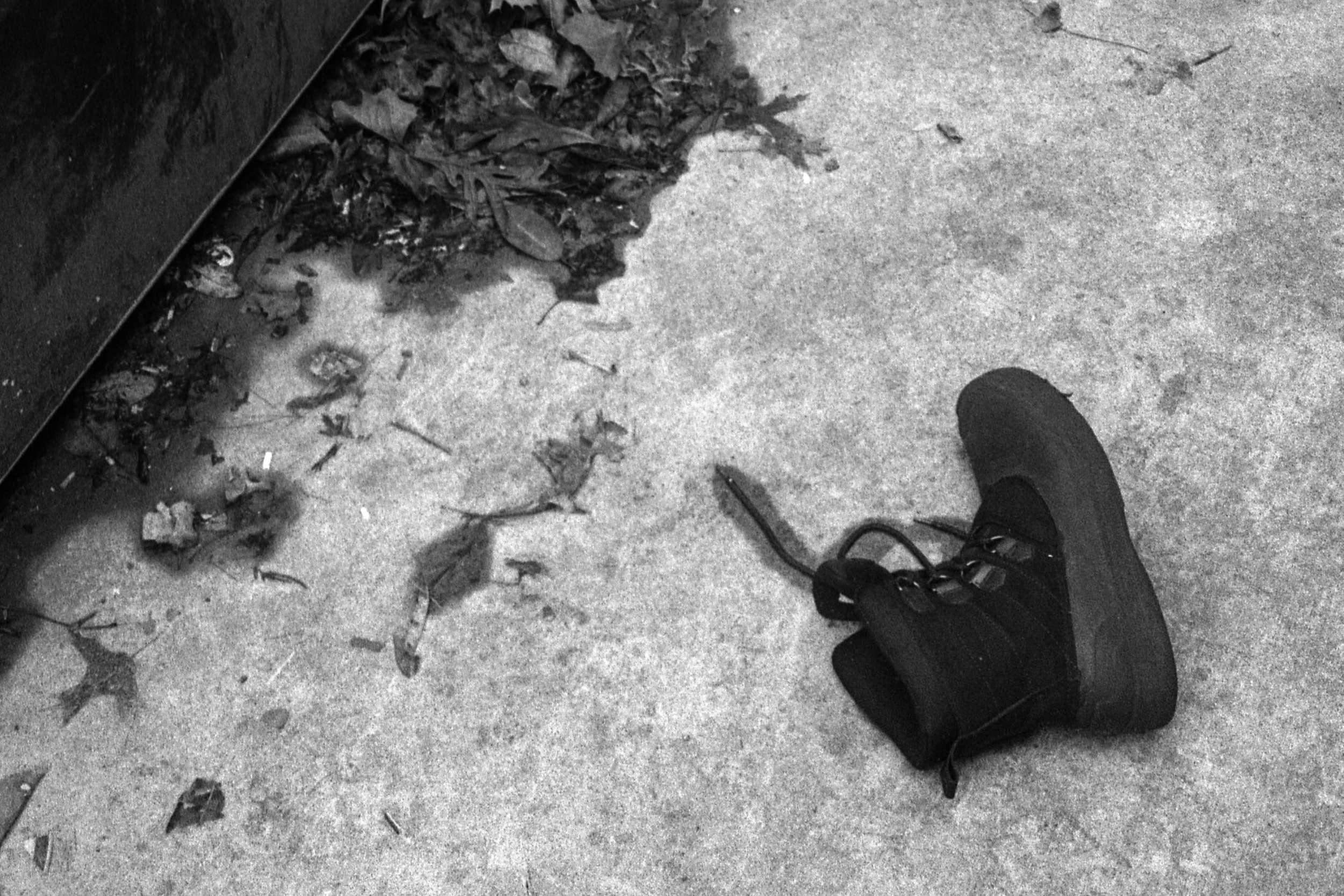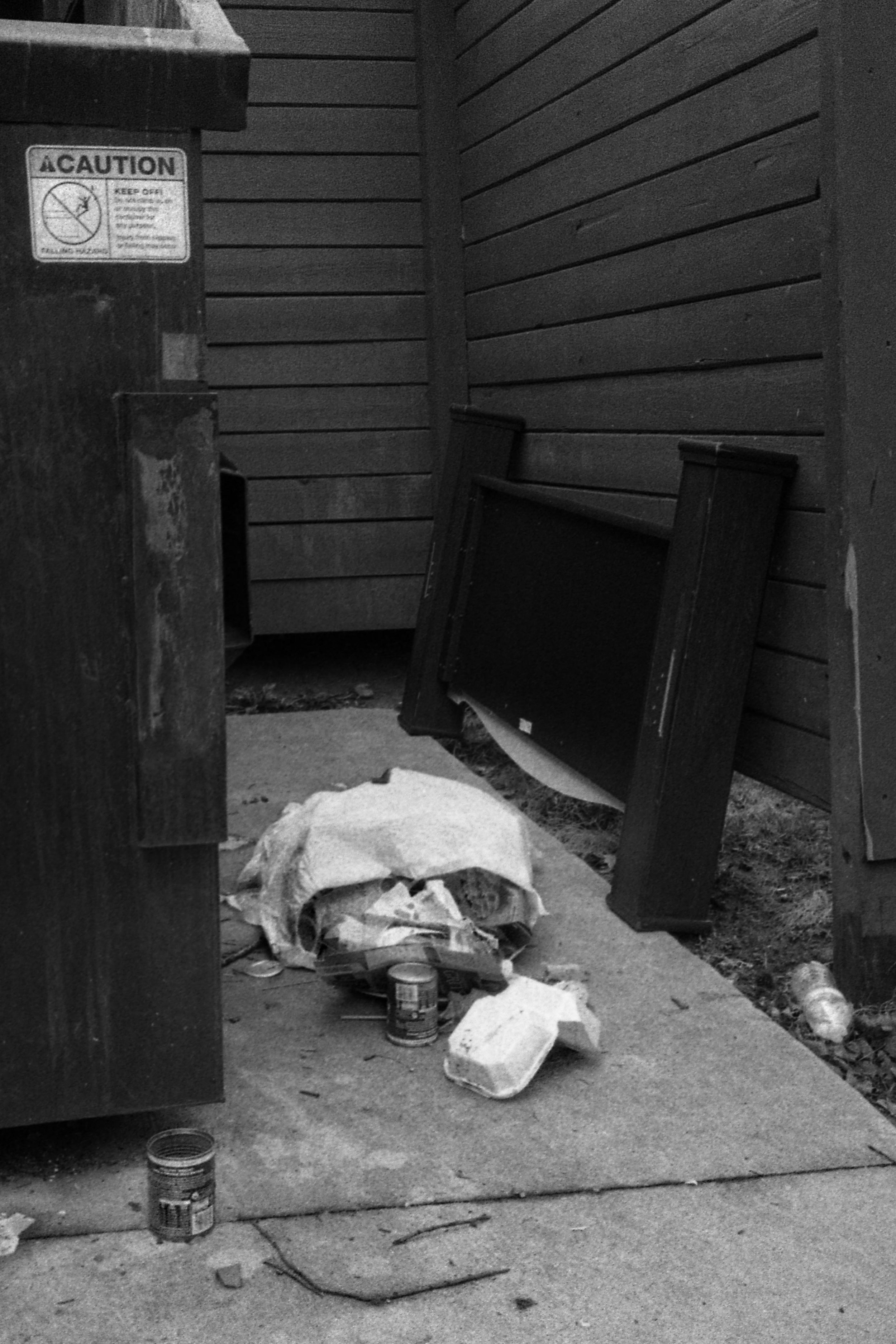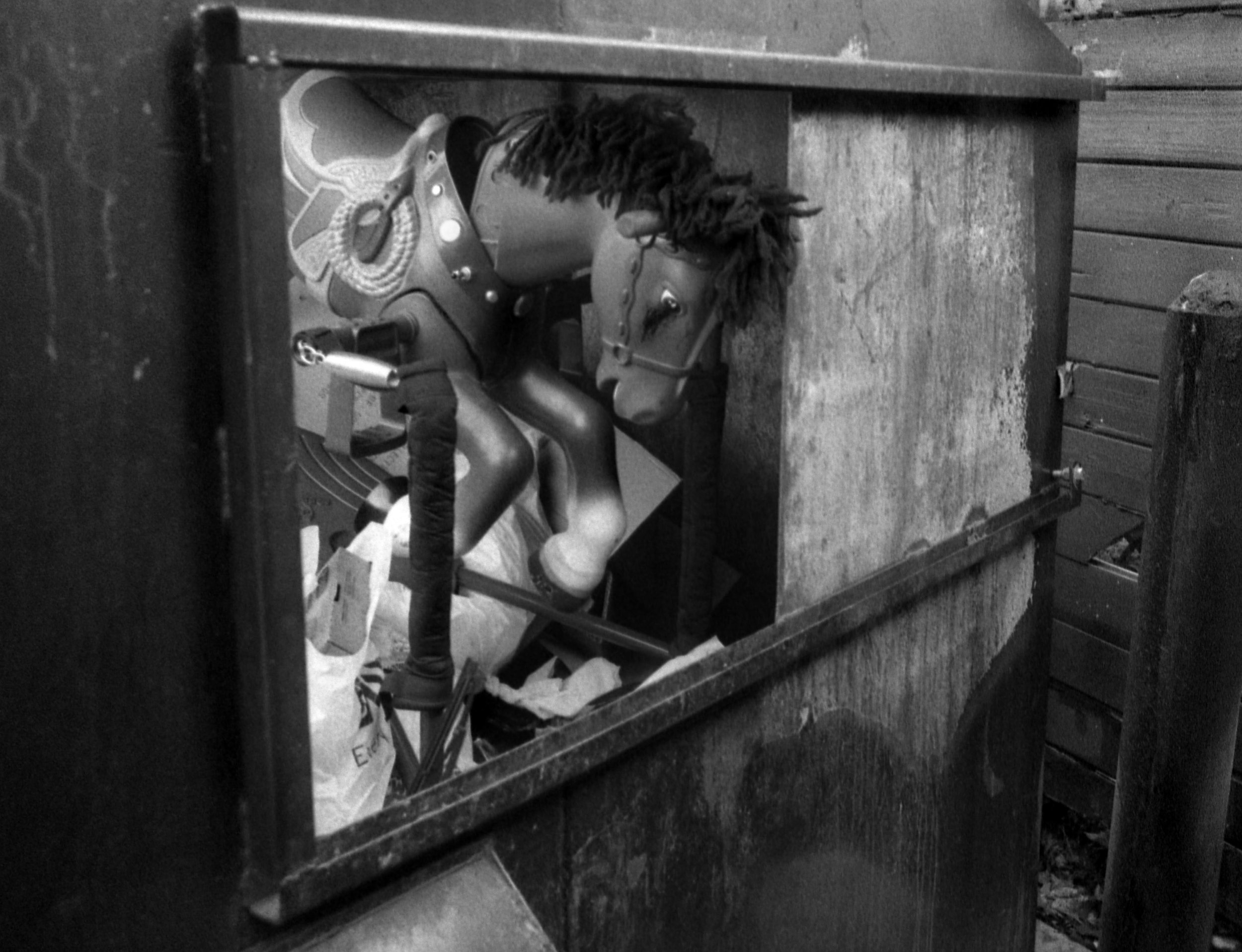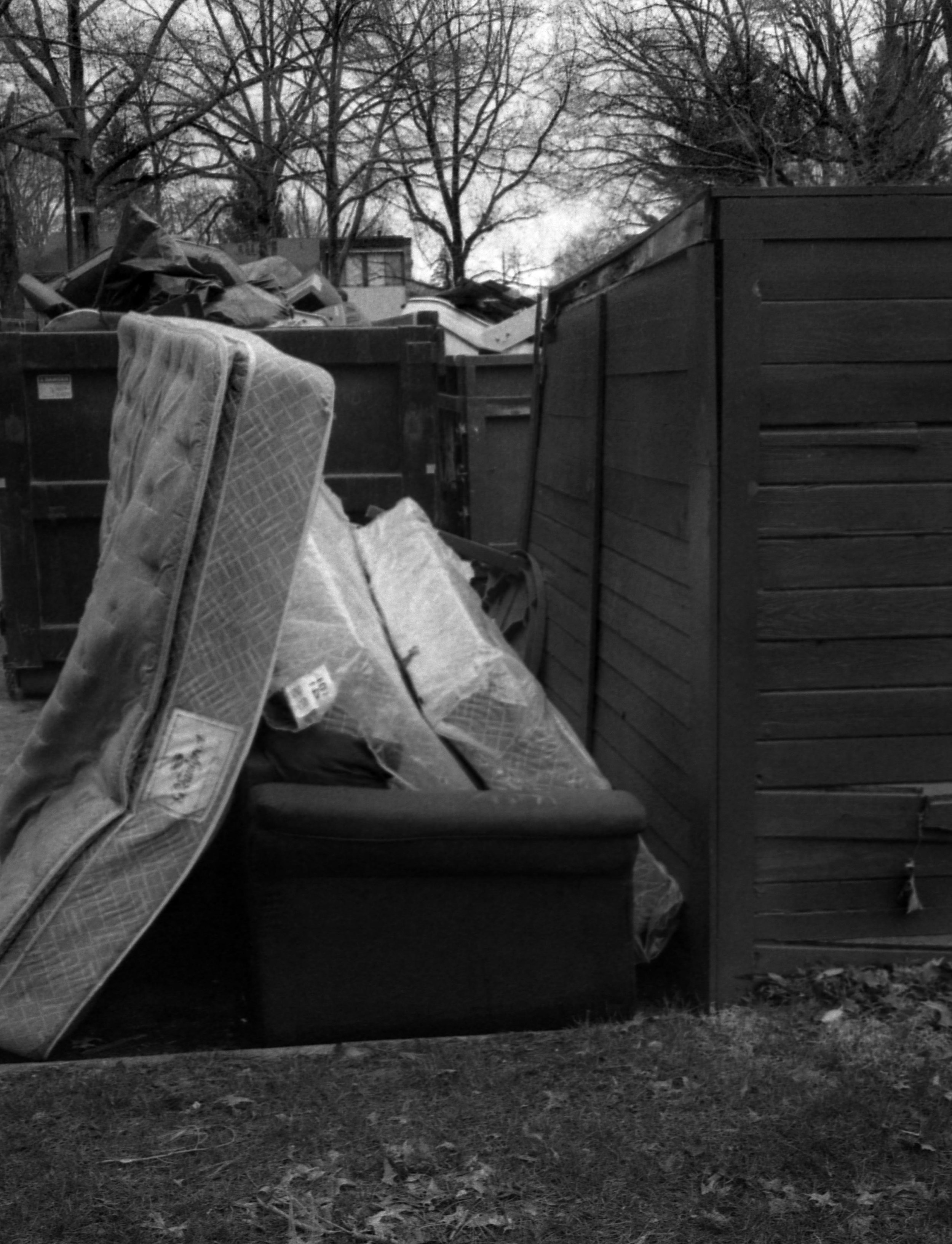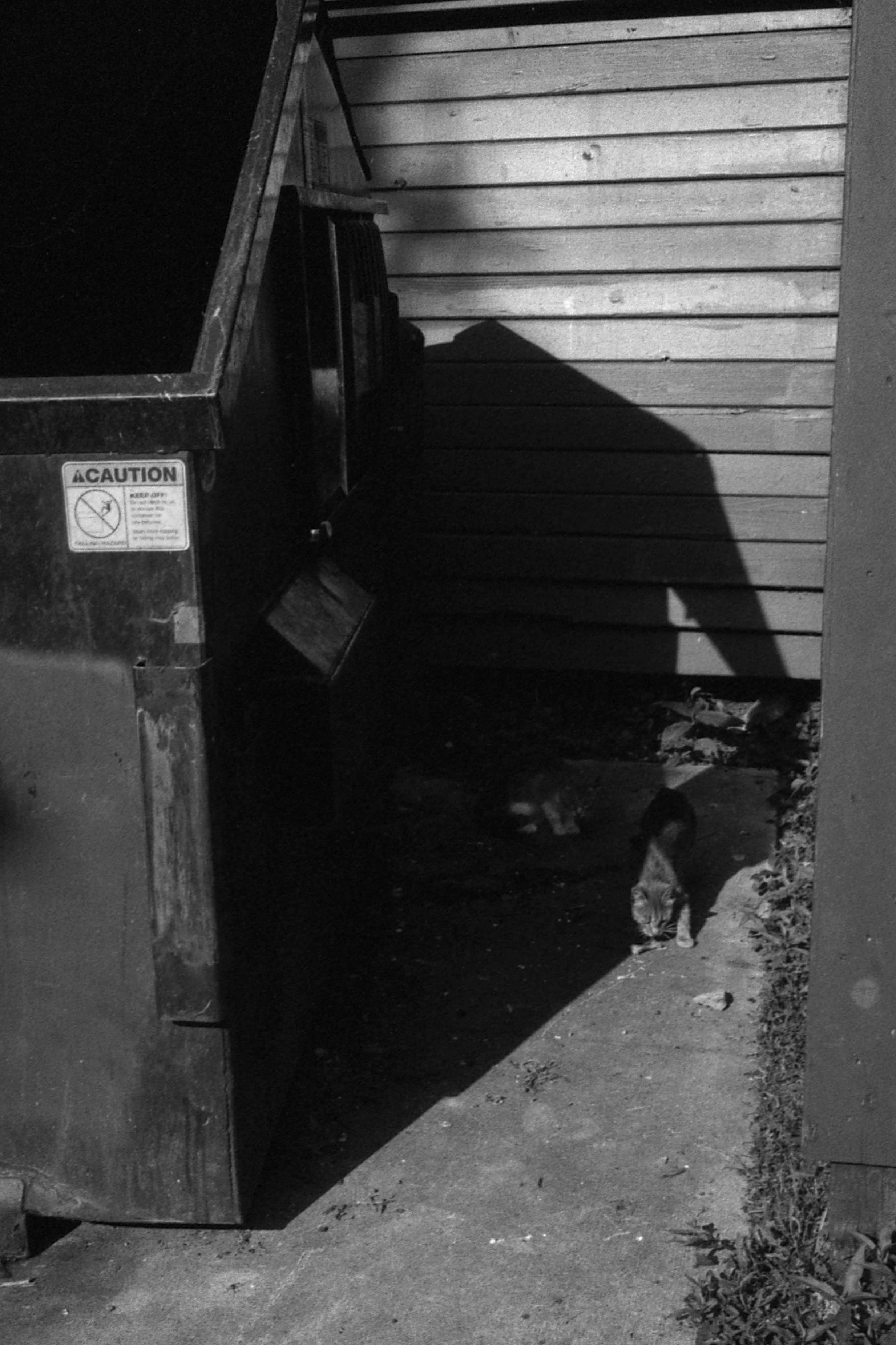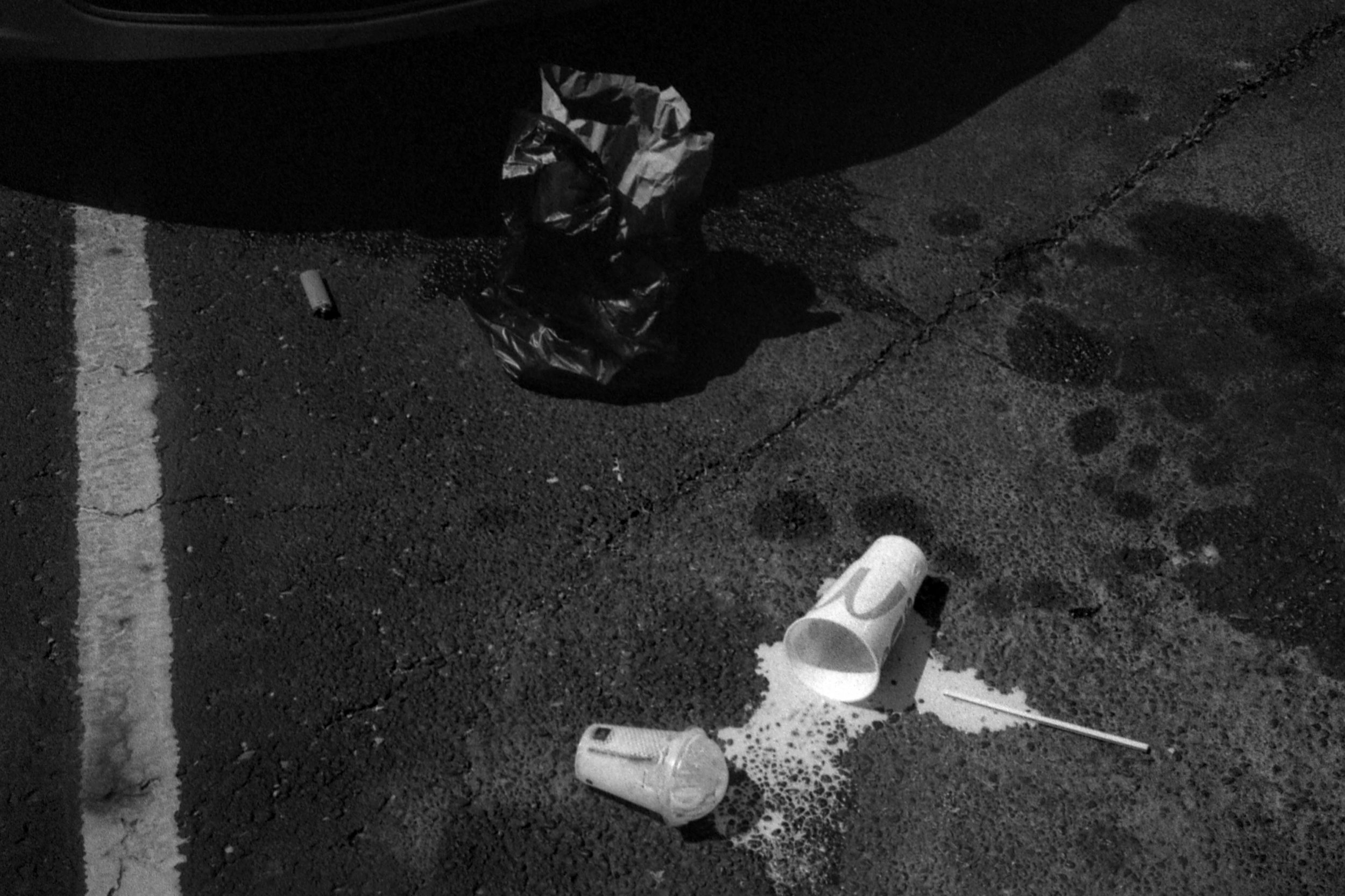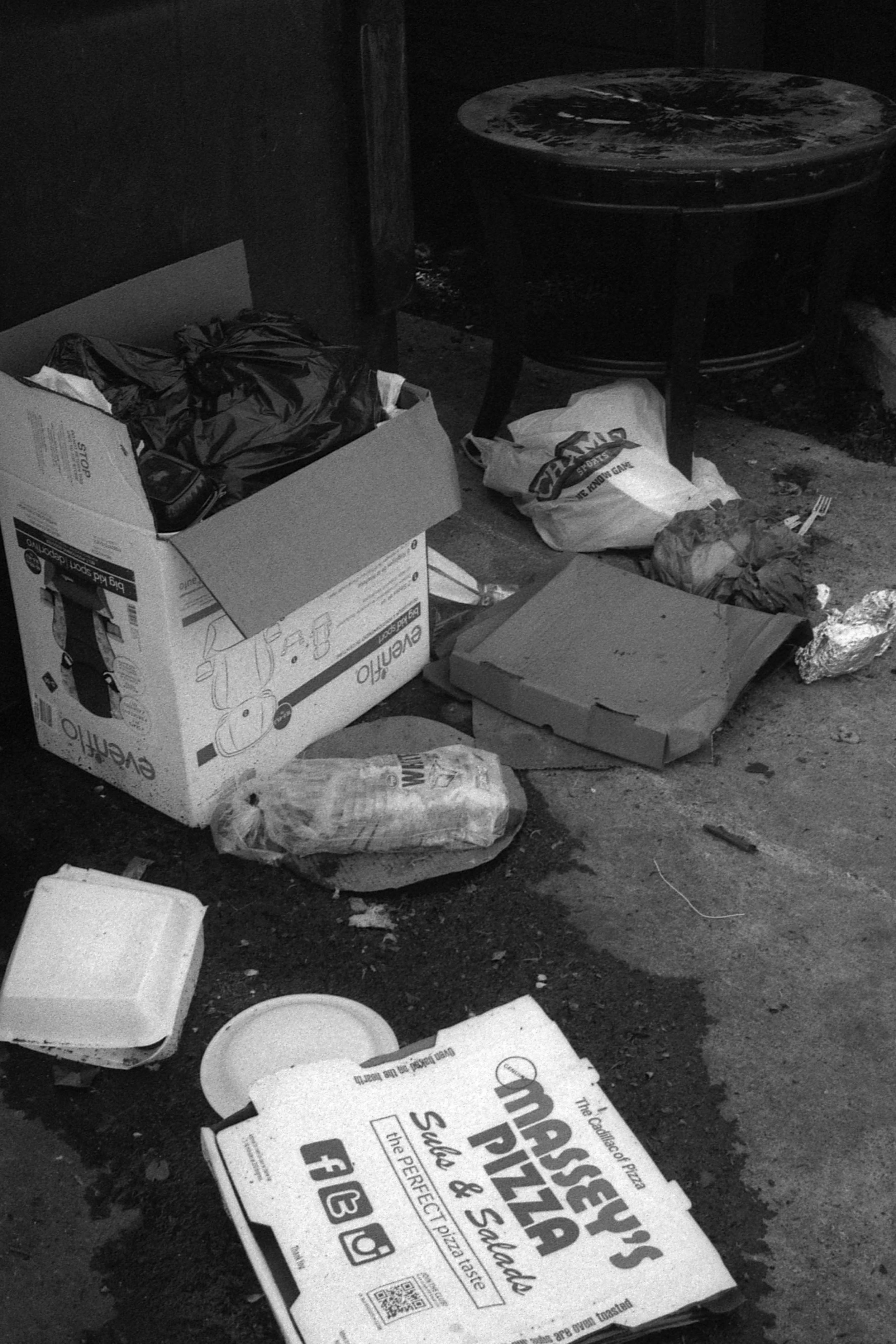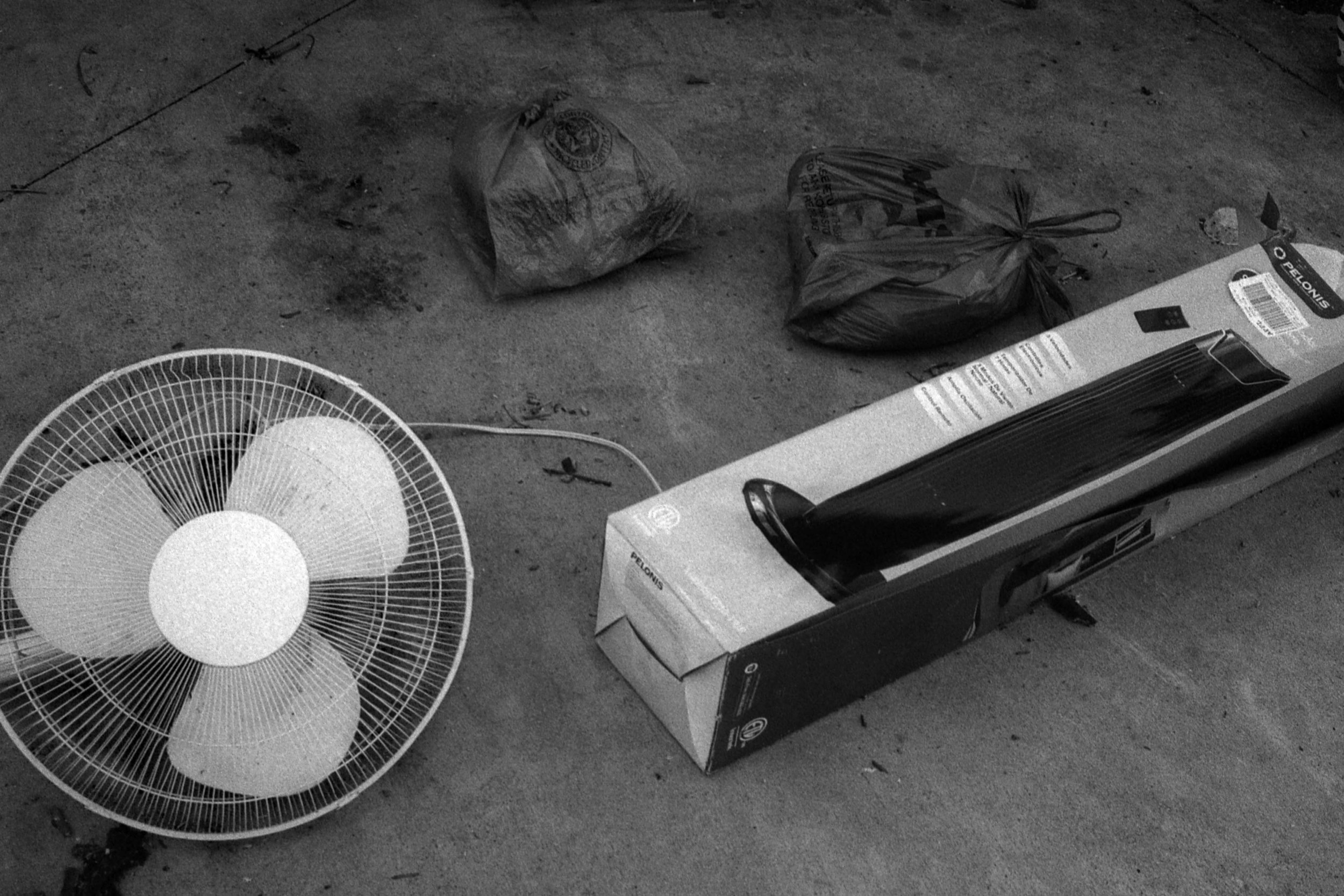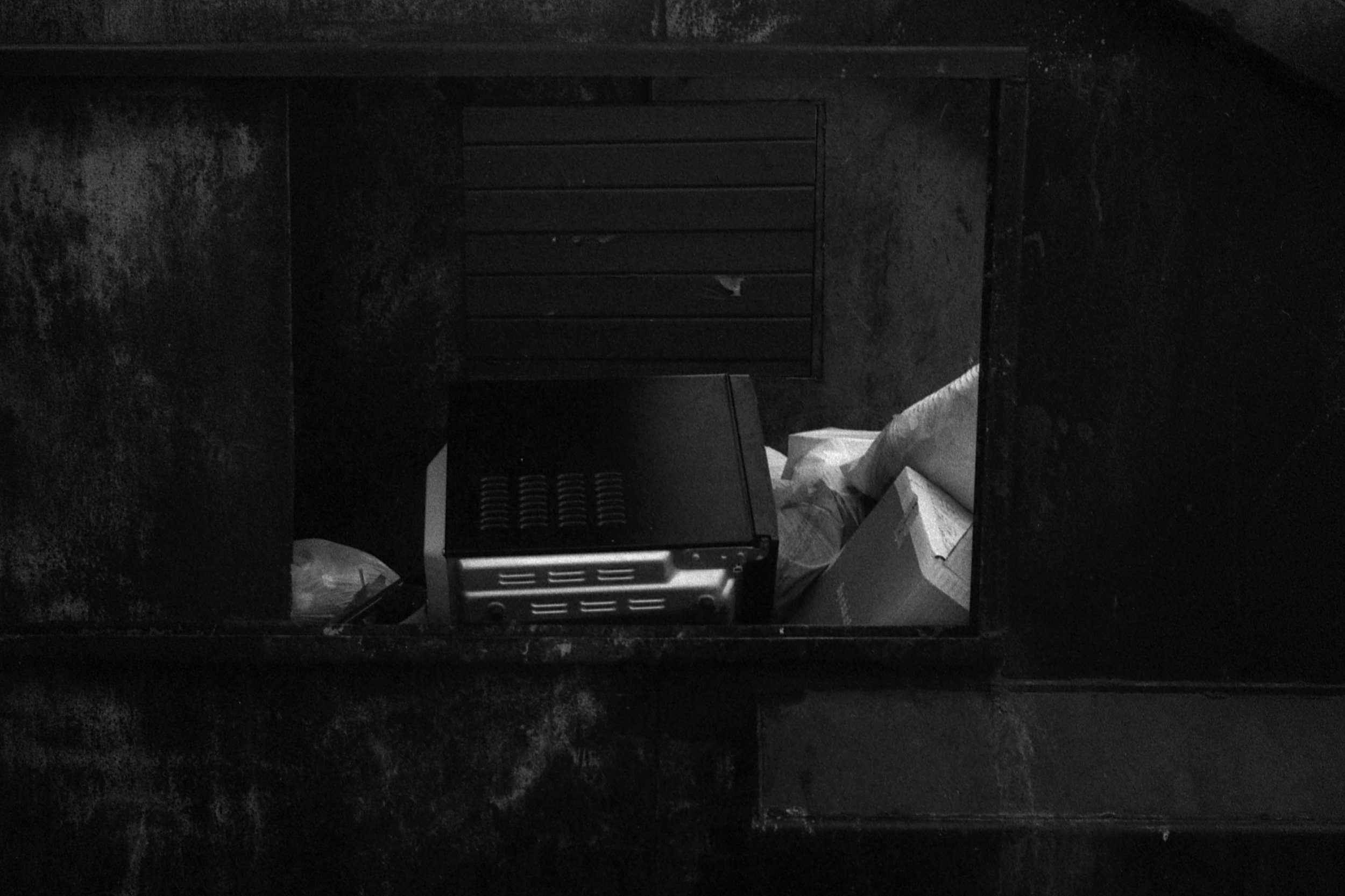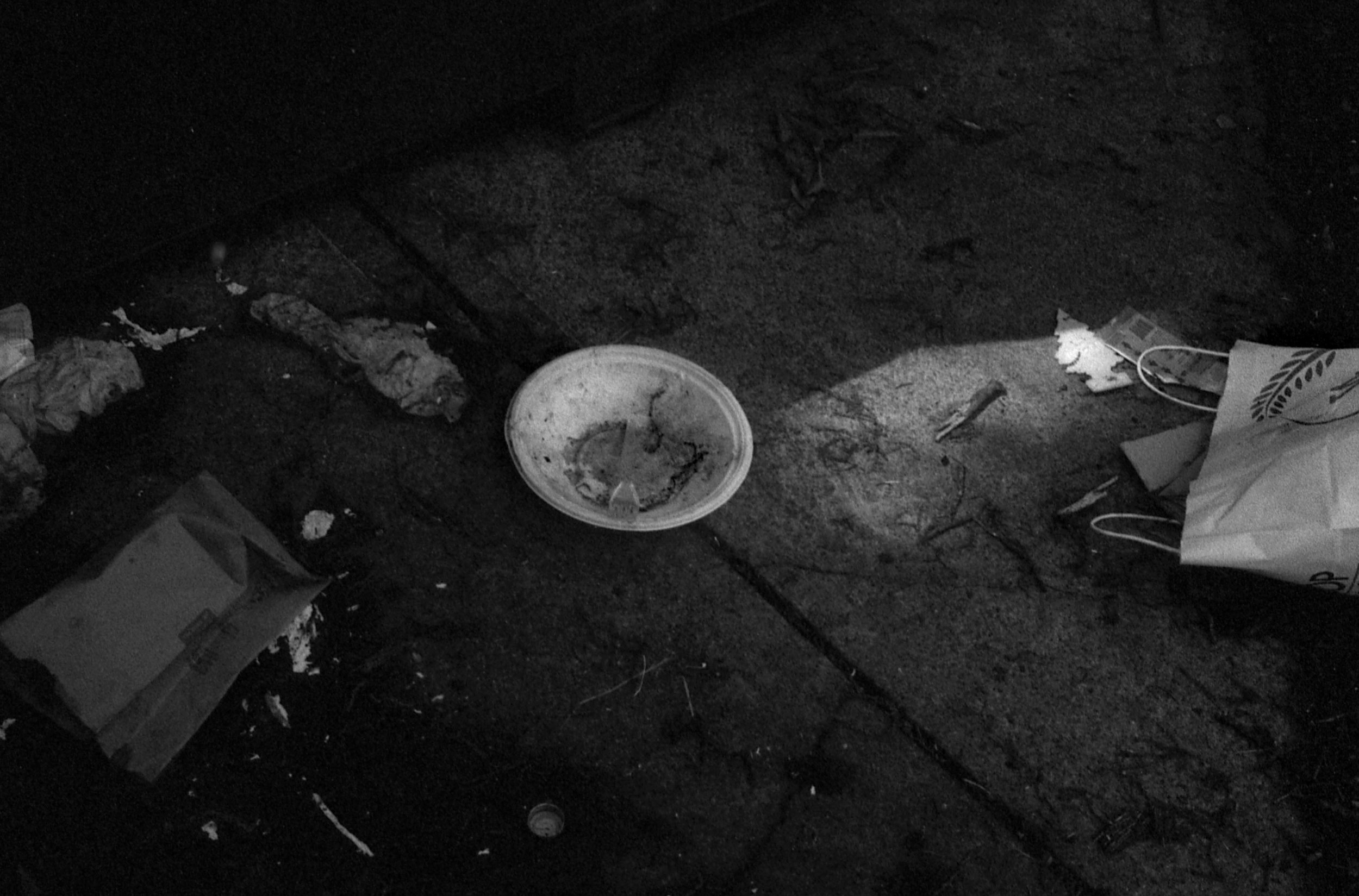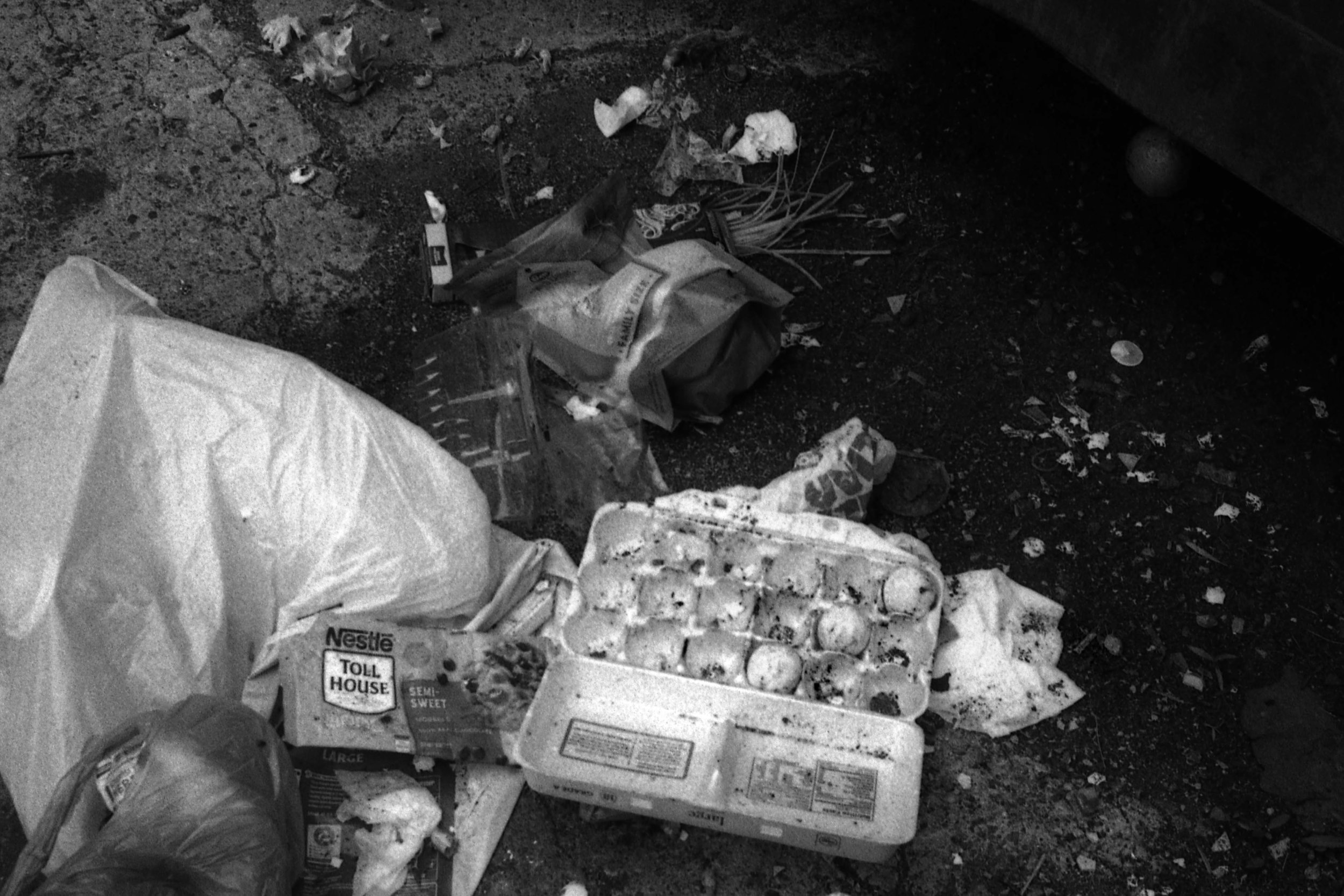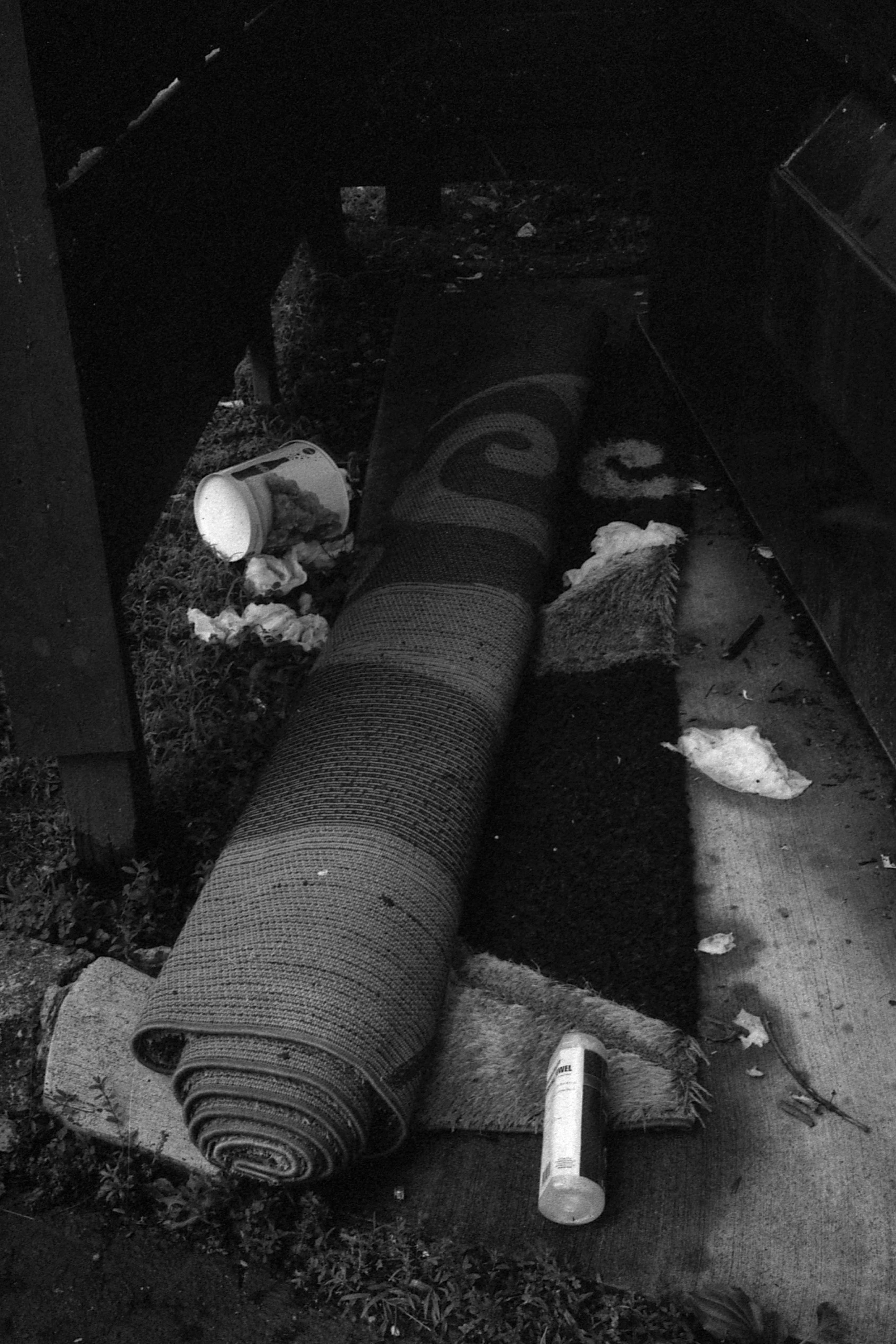The warm air smelled like hot garbage from the day’s sun, the dumpsters were piled high with waste. As I made my way around the apartment complex, strolling my dogs for their nightly exercise, the hair on the back of my neck suddenly raised, my body sensing something was not right. Somewhere in the eerie, hot stillness, a mechanical fish dolefully serenaded me with a tinny rendition of “Don’t Worry, Be Happy,” from the depths of its metallic, trash-filled resting place. Although I noticed the garbage, frequently commented on it, marveled at its ever-presence, I never really stopped to see its strangeness, its staggering volume, or its odd artfulness - a mountain of sofas, replenished and restacked every few weeks, and mattresses towered together like so many Jenga tiles, ready to topple in an instant. The next day, I began photographing, using a half-frame camera. Deemed a toy by some, and primitive in its capture methods, this camera seemed fitting. The half frame nature of the camera seems like a form of poetic justice to document trash - rather than wasting, these cameras allow you to capture 2 frames in the space of a usual 35mm frame, cutting the number of film rolls used in half.
What causes this massive amount of trash? Are people in this area just lazy and wasteful? Reality is much more nuanced. Perhaps some of it is laziness, but in low-income neighborhoods like mine, most of us have very little in savings; when it comes time to move, people can’t afford to hire movers. It is more cost effective to dump big-box-store or secondhand furniture and start fresh in a new place. The cycle is hard to break; cheap furniture breaks down quickly and makes its way into the garbage stream - lather, rinse, repeat. Additionally, neighborhoods like this one provide no recycling option, as this would cost management and result in lower profits. Many things that should be recycled, like plastics, batteries, and electronics, are only withheld from the dumpster if people can afford the space, time, and vehicle required to take their own recycling to a center. Until people have access to better disposal of their castoffs, or a more livable wage that allows them to make more quality purchases, this will continue. This series started in October 2018 and ended in 2019 when I moved from this neighborhood.
